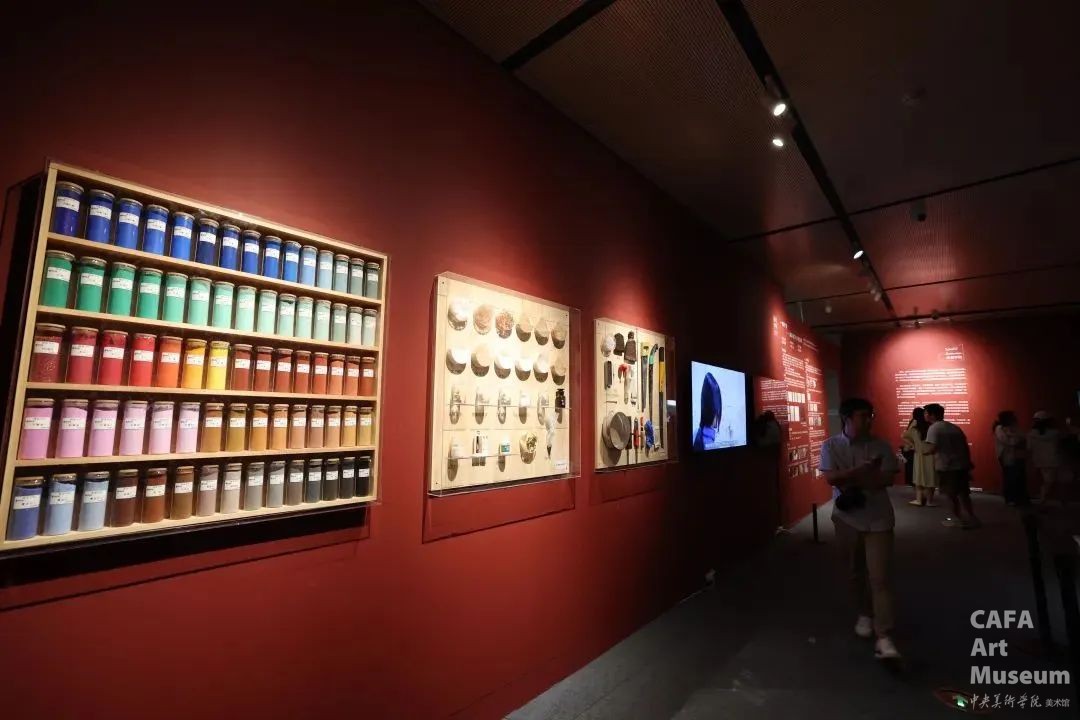

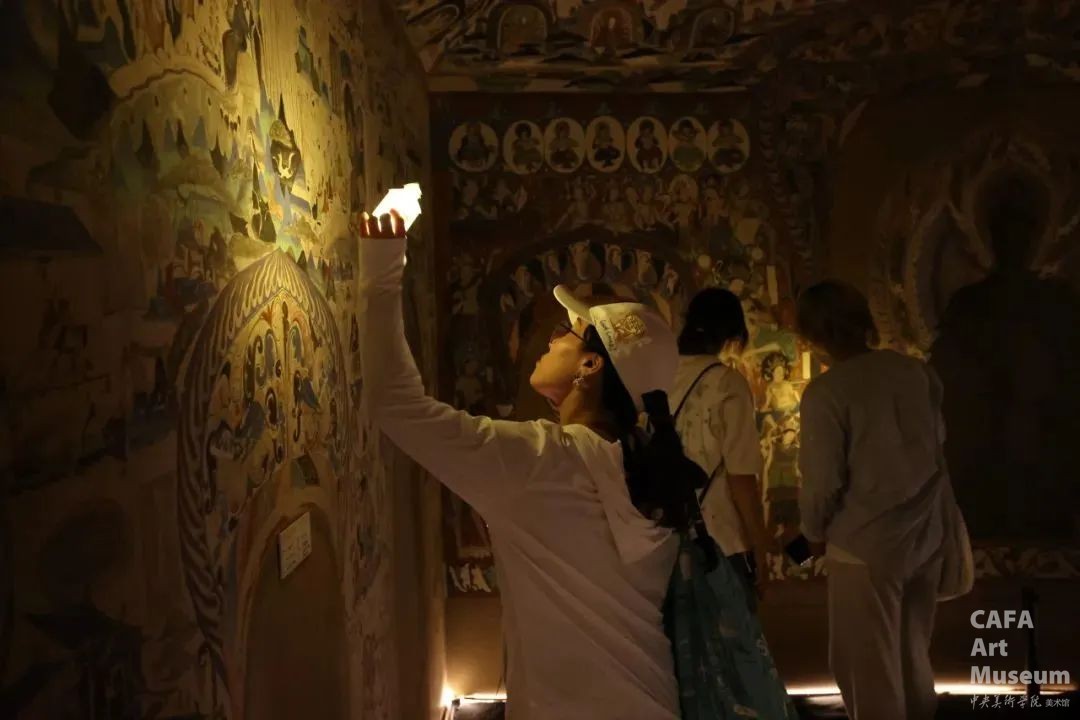
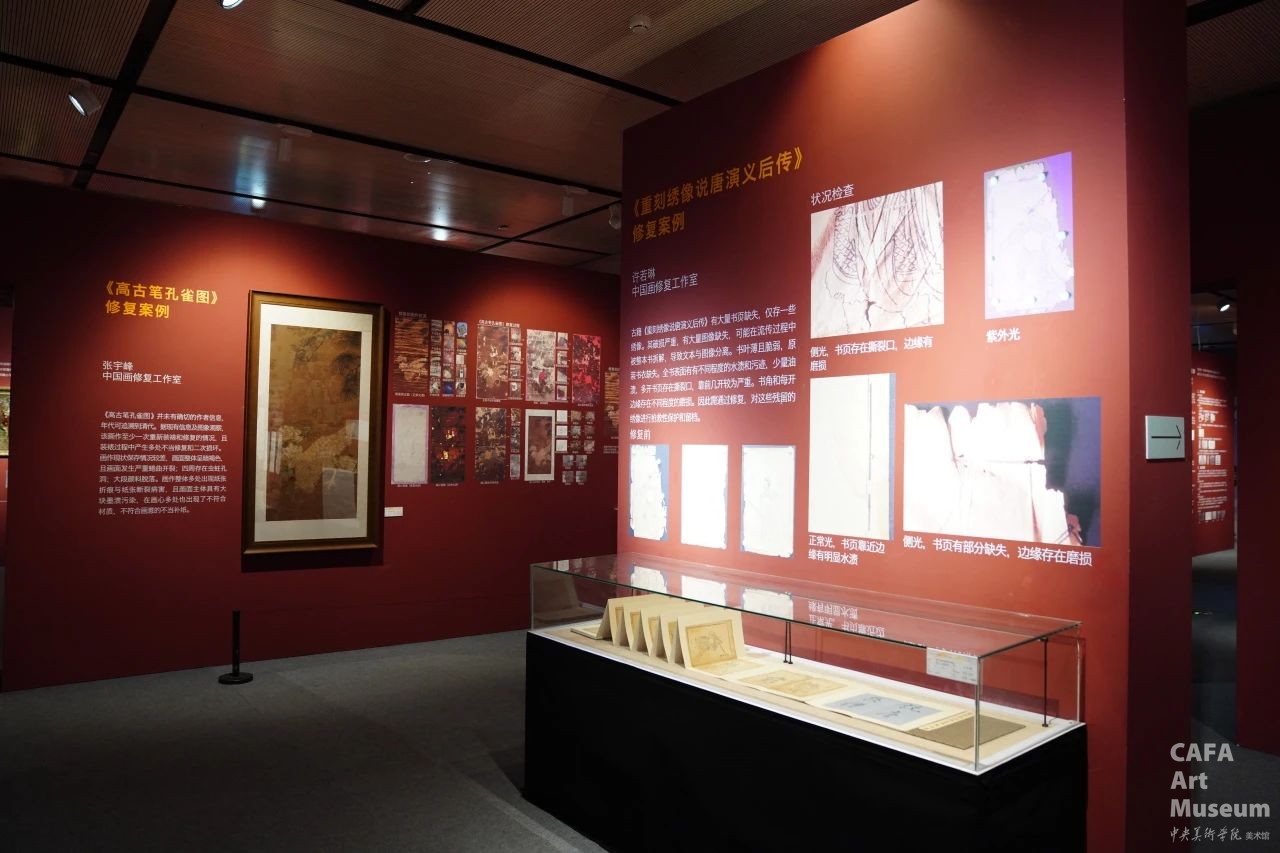
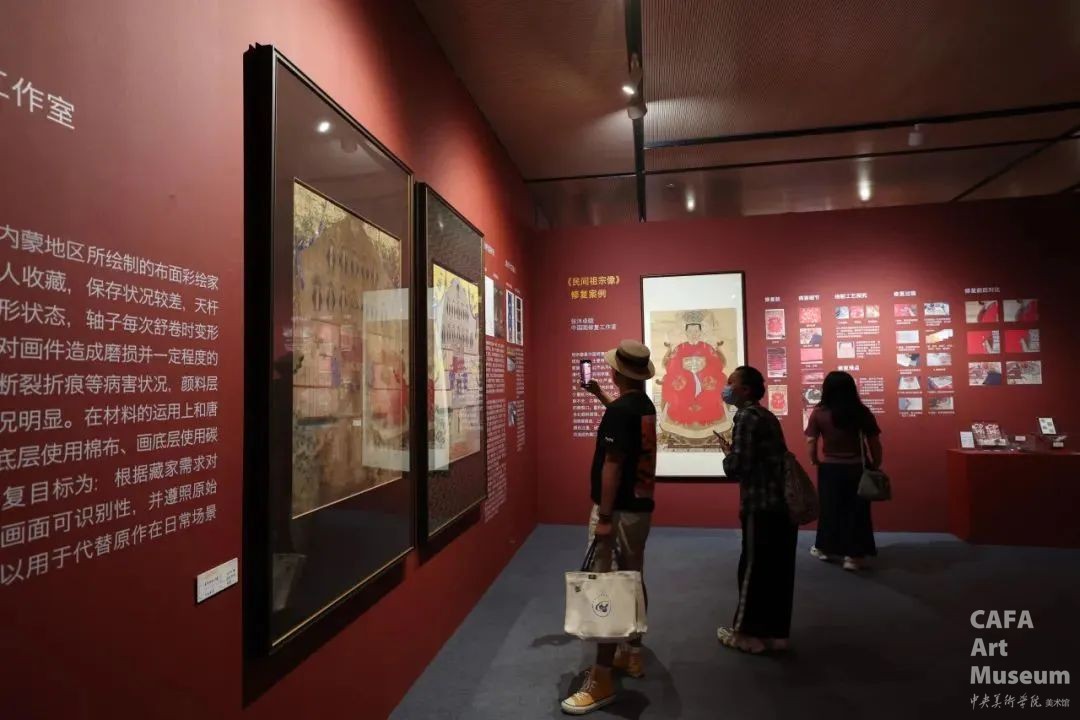
Under the lights, the exhibition hall is filled with tranquility. Frames of paintings that were once dim and mottled now radiate new brilliance; fragmented patterns on murals are ingeniously continued; ink marks blurred by time in Chinese paintings regain their vitality; and the dusty splendor on oil paintings is carefully awakened. After four years of dedicated study, the Restoration College finally welcomes its first batch of 21 undergraduate graduates. With ingenuity and skill, they present the first "graduation thesis" for the construction of the restoration discipline at the Central Academy of Fine Arts. These works may be immature, but they are imbued with the power to break through the soil, witnessing the footprints of young restorers and the fledgling college growing together.
CAFA Graduation Season is coming to an end on June 22. Friends who haven't visited the exhibition yet, don't miss it!
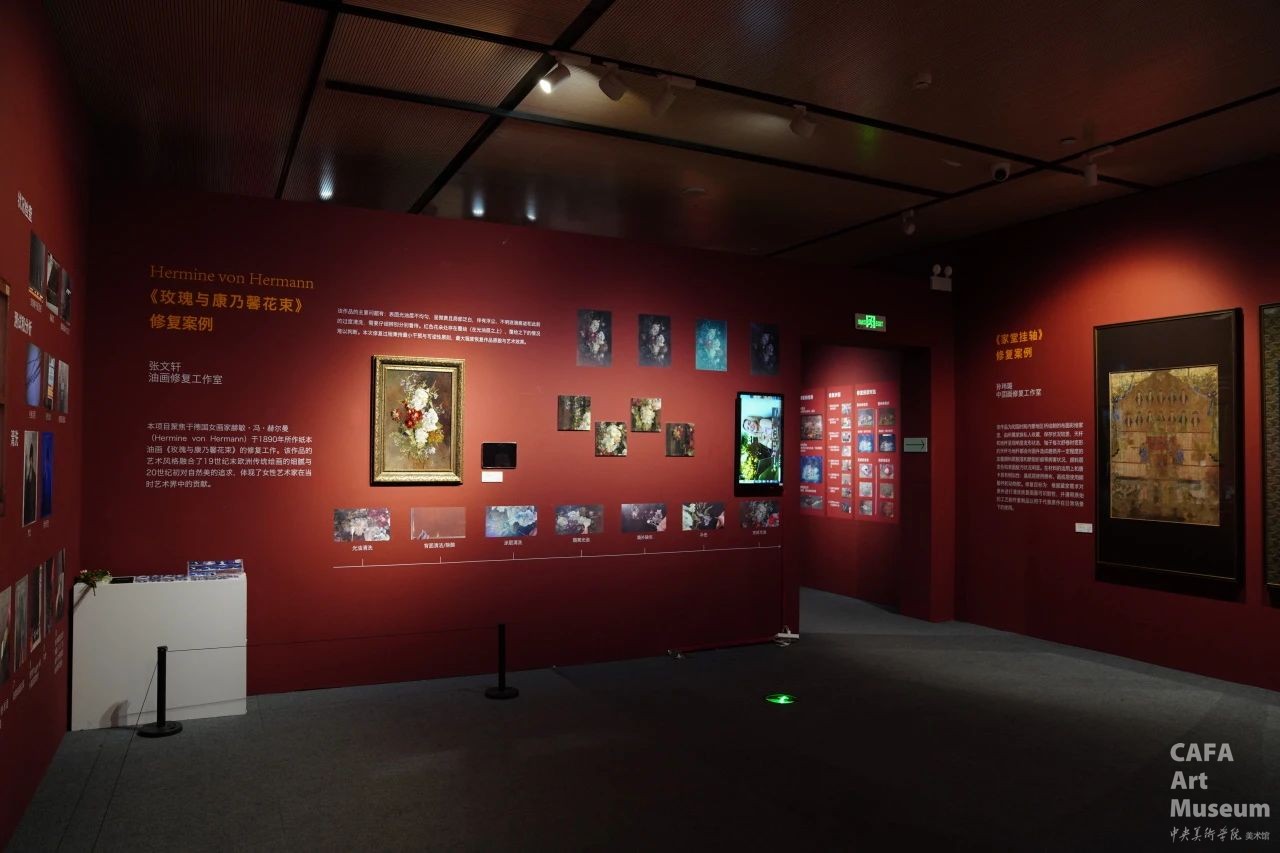
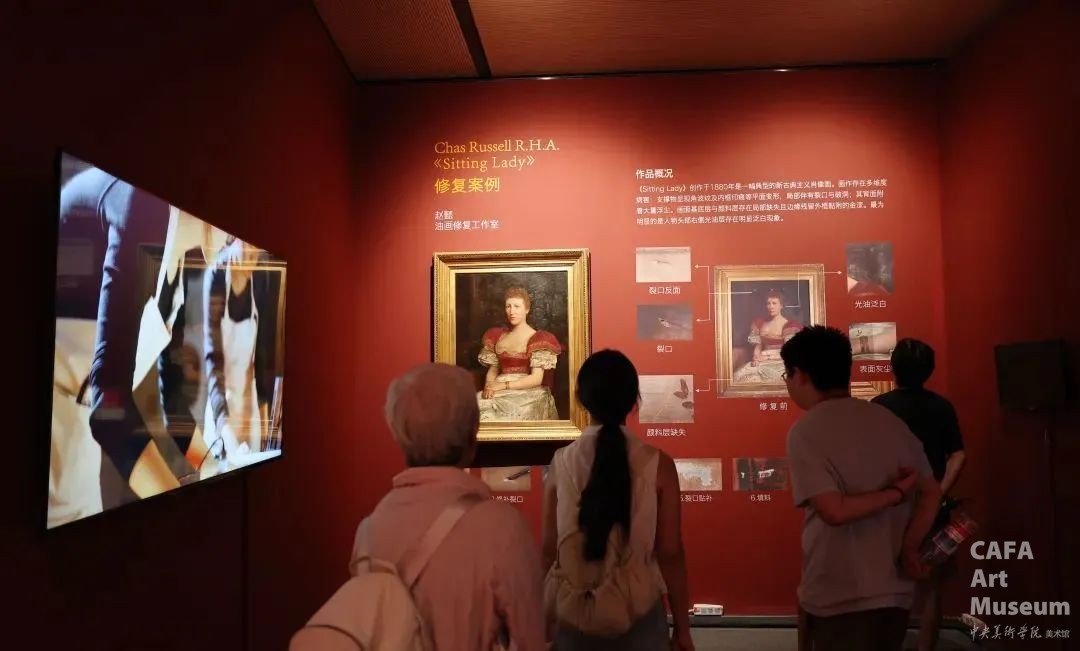
Mural Restoration Studio
CAFAM@ 2025
Eight graduates from the Mural Restoration Studio jointly completed the "A Glimpse of a Millennium — Replication of Mogao Grotto 285". Carved during the Datong period of the Western Wei Dynasty, Mogao Grotto 285 is the earliest grotto in the Dunhuang Grottoes with a confirmed excavation date. The main chamber is a bucket-shaped ceiling grotto with a square plane, a relatively large meditation grotto. Its architectural form directly originates from India, similar to the Ajanta Caves in India, belonging to the early form of meditation grottoes in Mogao Grottoes. The work is replicated at a scale of 1:0.7, currently 4.4 meters wide, 4.51 meters deep, with a wall height of 2.44 meters and a ceiling height of 3.37 meters. It adopts a wooden keel structure and traditional mud-based groundwork painting, divided into three sections: ⅠGroundwork Production: The east wall serves as a display area for the layered production of groundwork. ⅡCurrent-State Copying: The north and south walls, as well as the sloping ceiling, are copied in their current state, reproducing the mural's current condition with traditional techniques. Ⅲ Restorative Copying: The west wall is for restorative copying. Based on historical documents, image comparison, and combined with the principles of traditional mural painting, it restores the original appearance of the murals, constructing a complete grotto view in different areas to form a temporal section, intuitively comparing and displaying the mural states in different historical stages. On-site, traditional materials and tools are used to present the groundwork layer and painting layer. The production, copying process, and disease simulation of the groundwork are recorded through videos. Combined with imaging technology, the dynamic process from groundwork production to painting completion is presented outside the grotto, allowing viewers to deepen their understanding of traditional craftsmanship through physical touch with the artifacts.
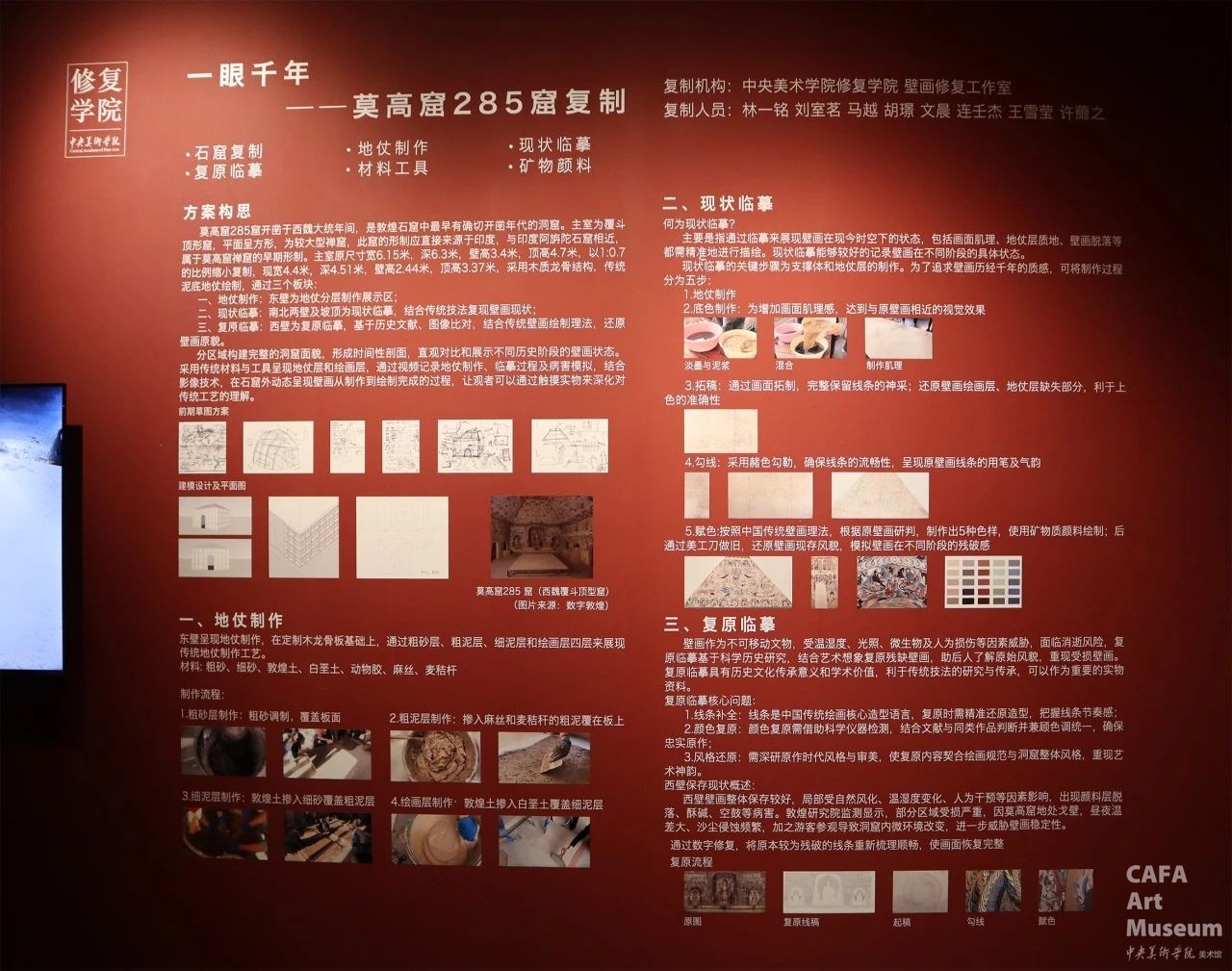
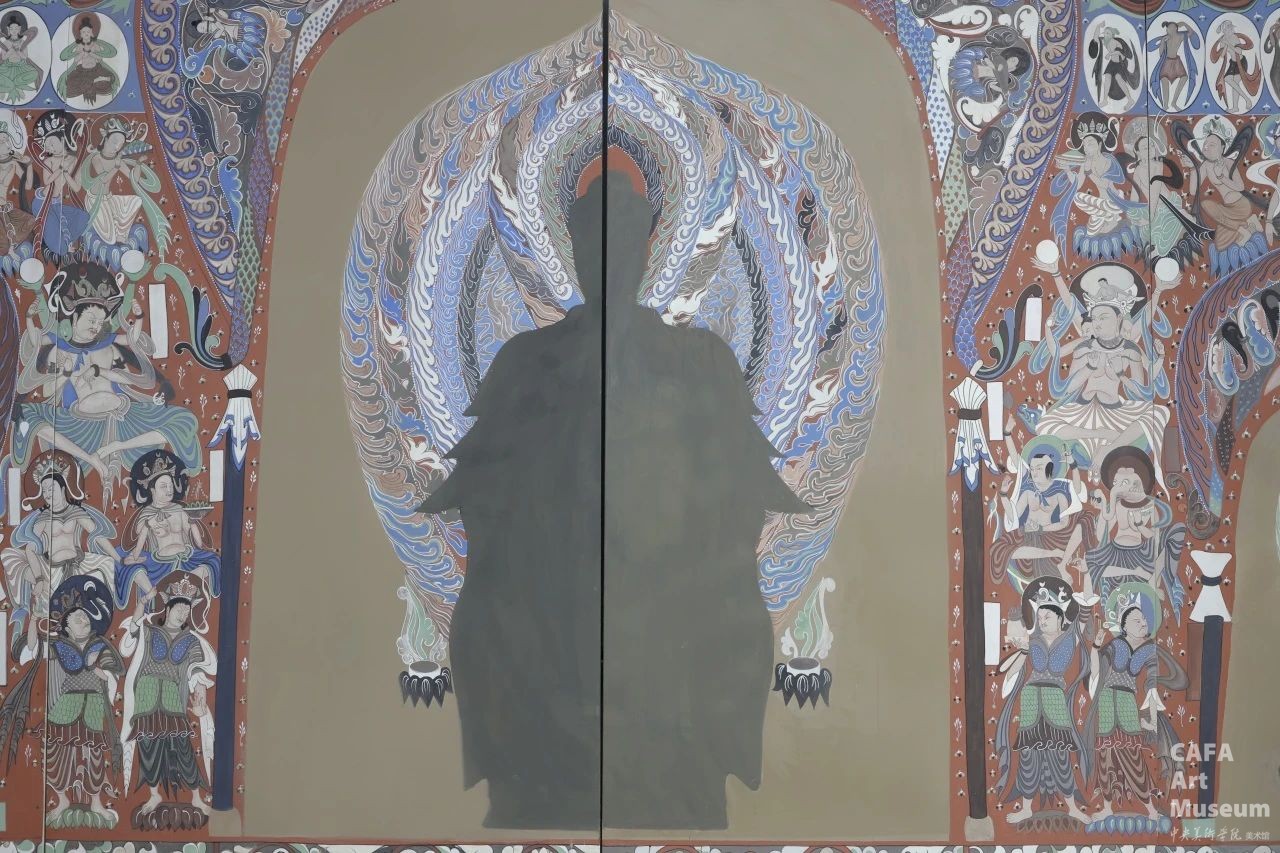
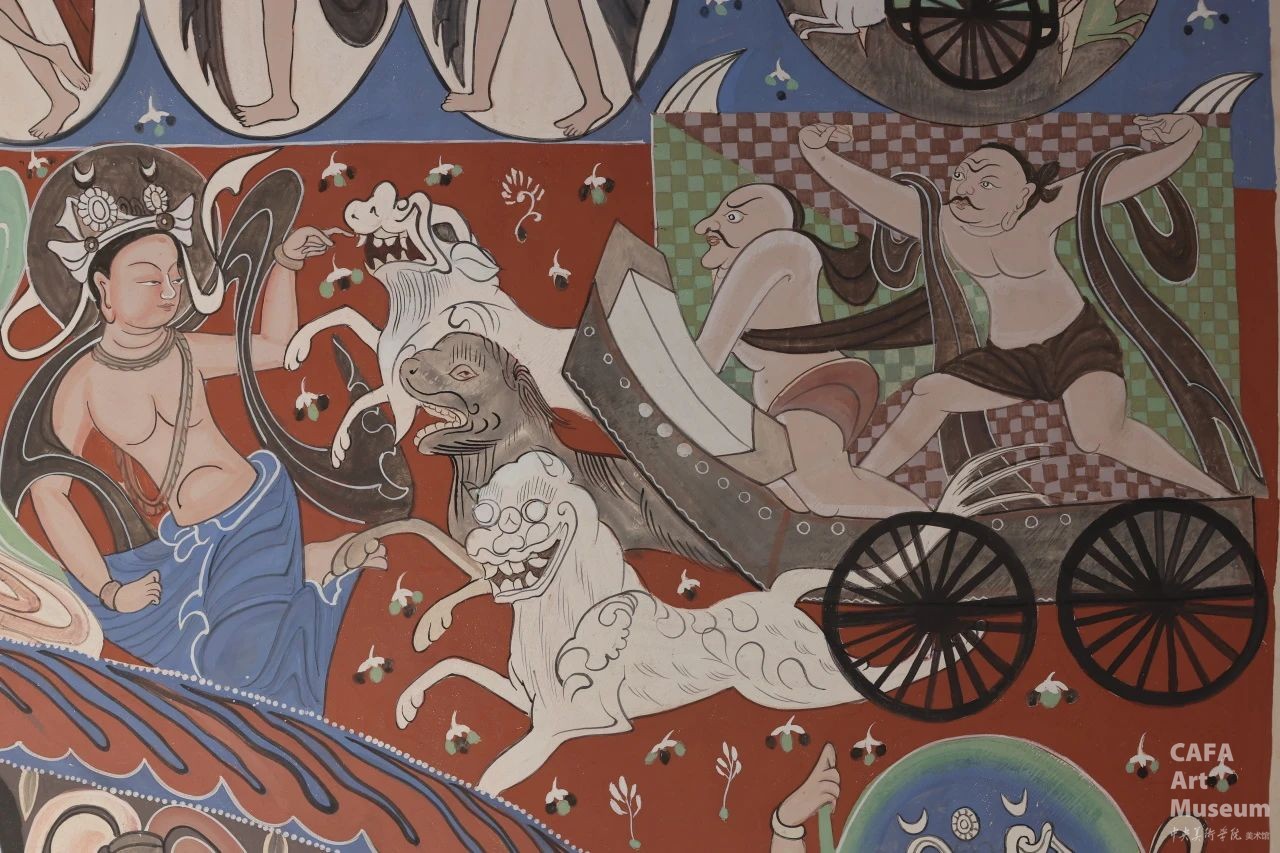

On-site Photo of the Restorative Copying on the Western Wall

On-site Photo of the Current-State Copying on the Southern Wall
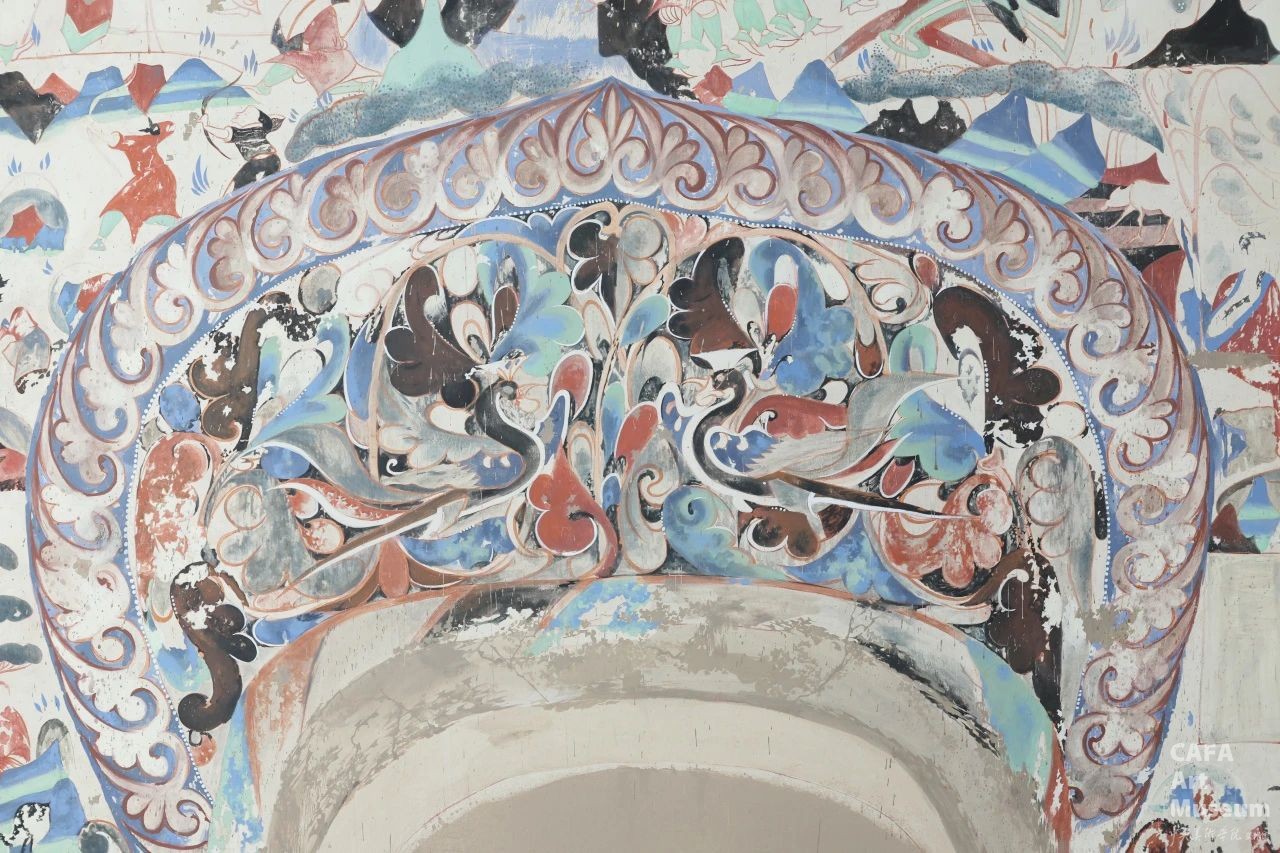
Lin Yiming, Detail of Current-State Copying on the Southern Wall
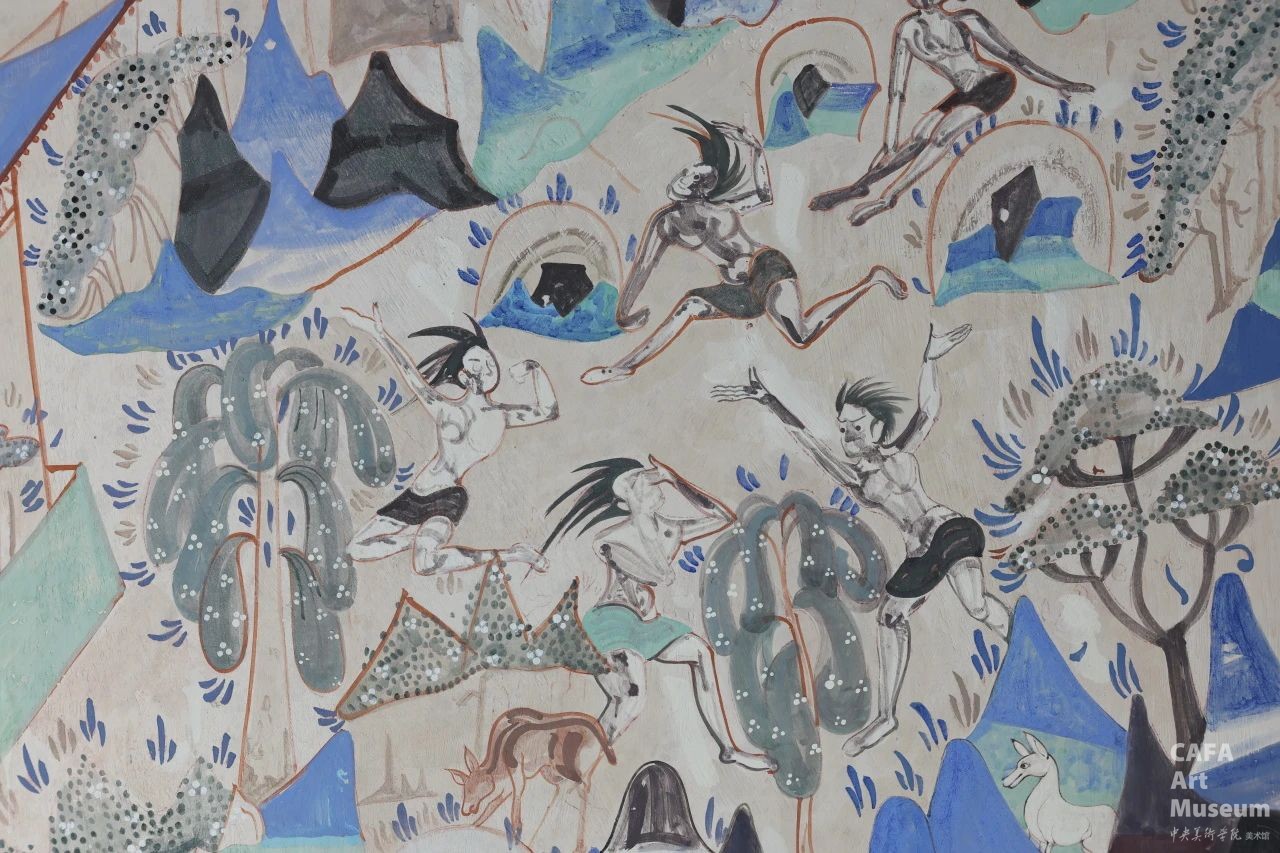
Wen Chen, Detail of Current-State Copying on the Southern Wall
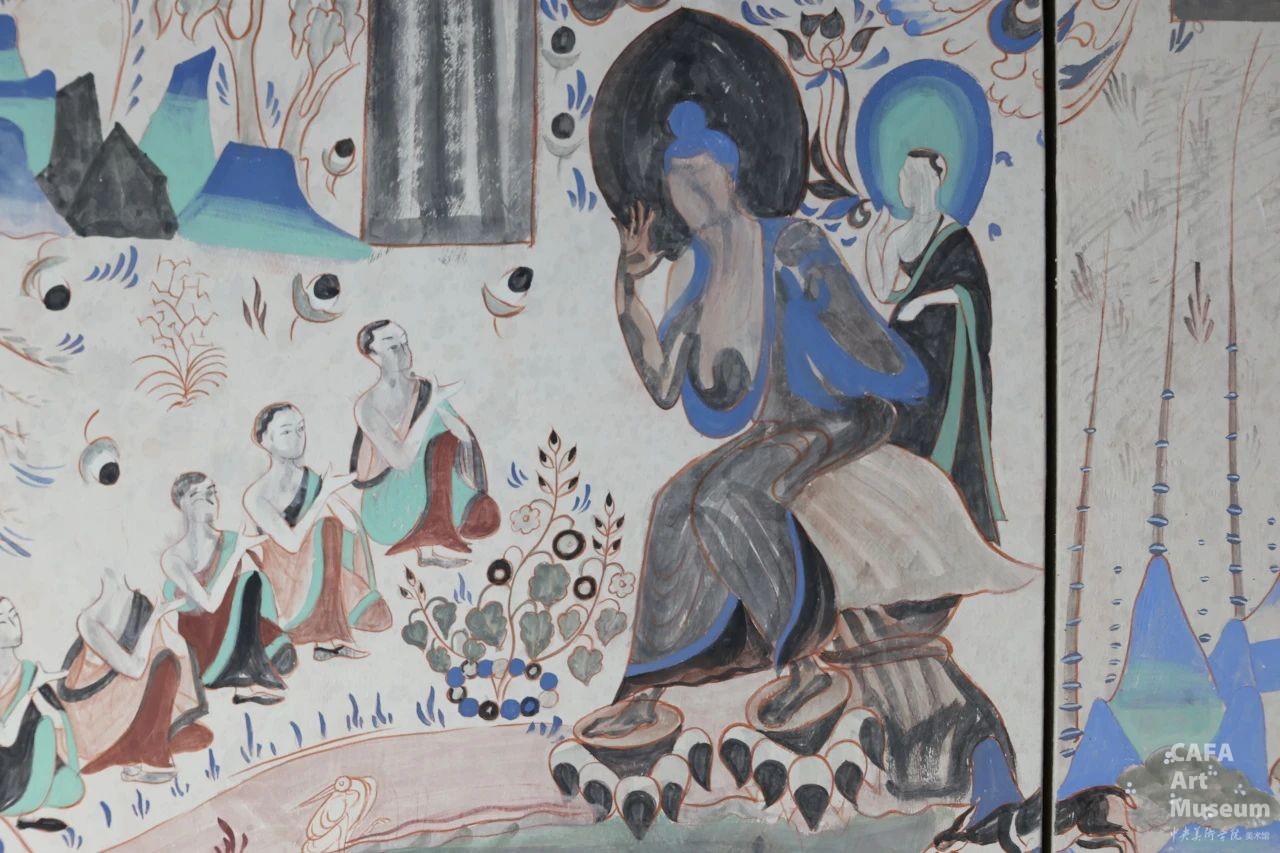
Lian Renjie, Detail of Current-State Copying on the Southern Wall
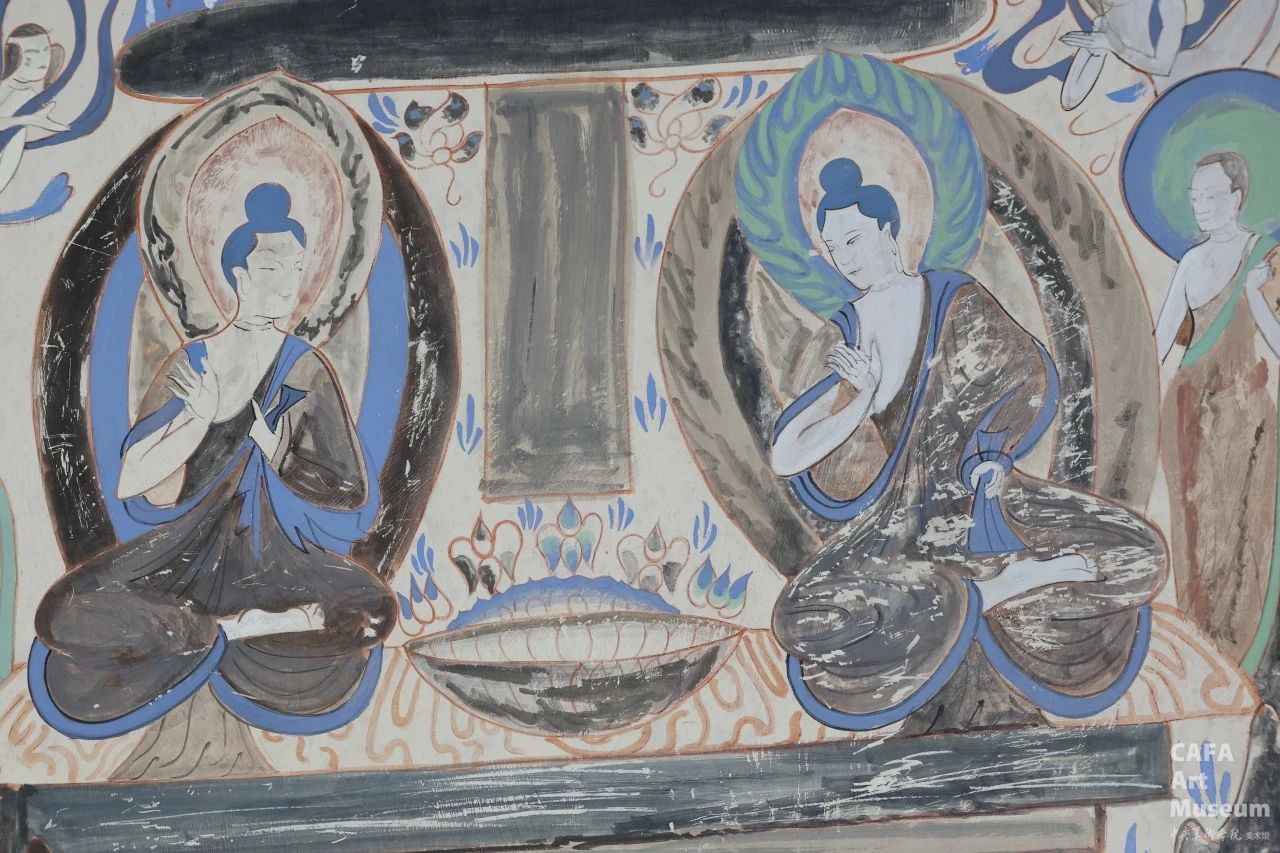
Xu Erzhi, Detail of Current-State Copying on the Southern Wall
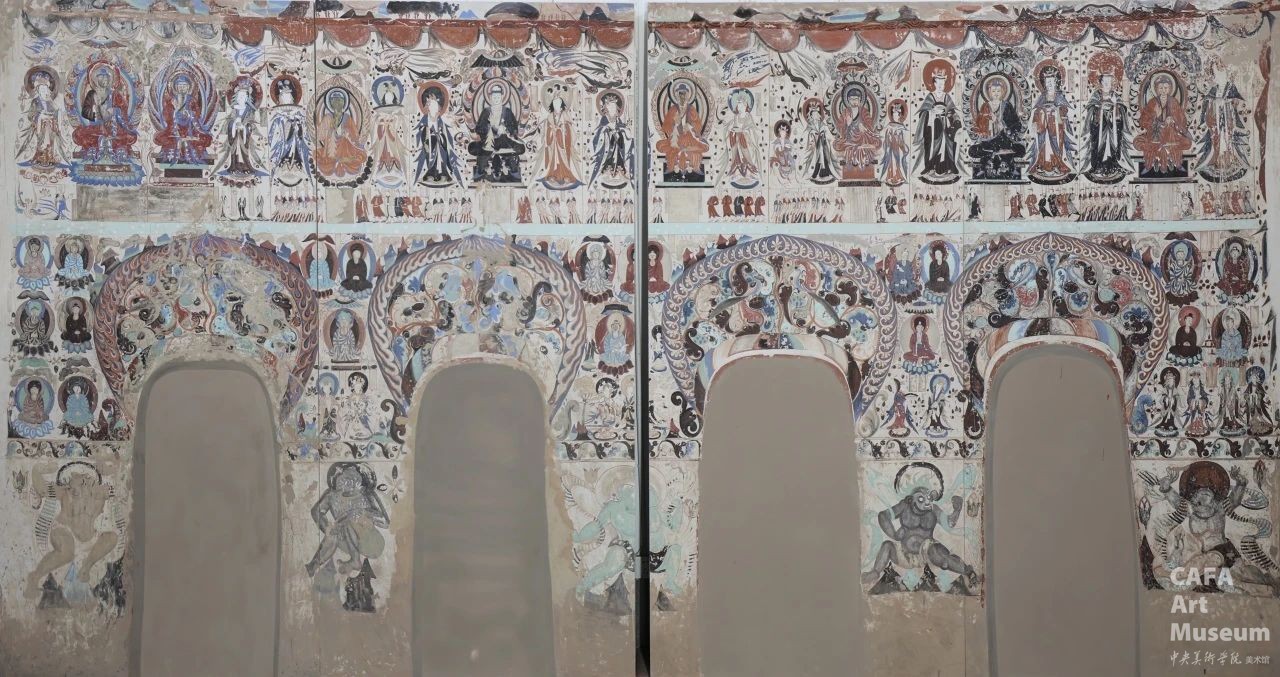
On-site Photo of the Current-State Copying on the Northern Wall
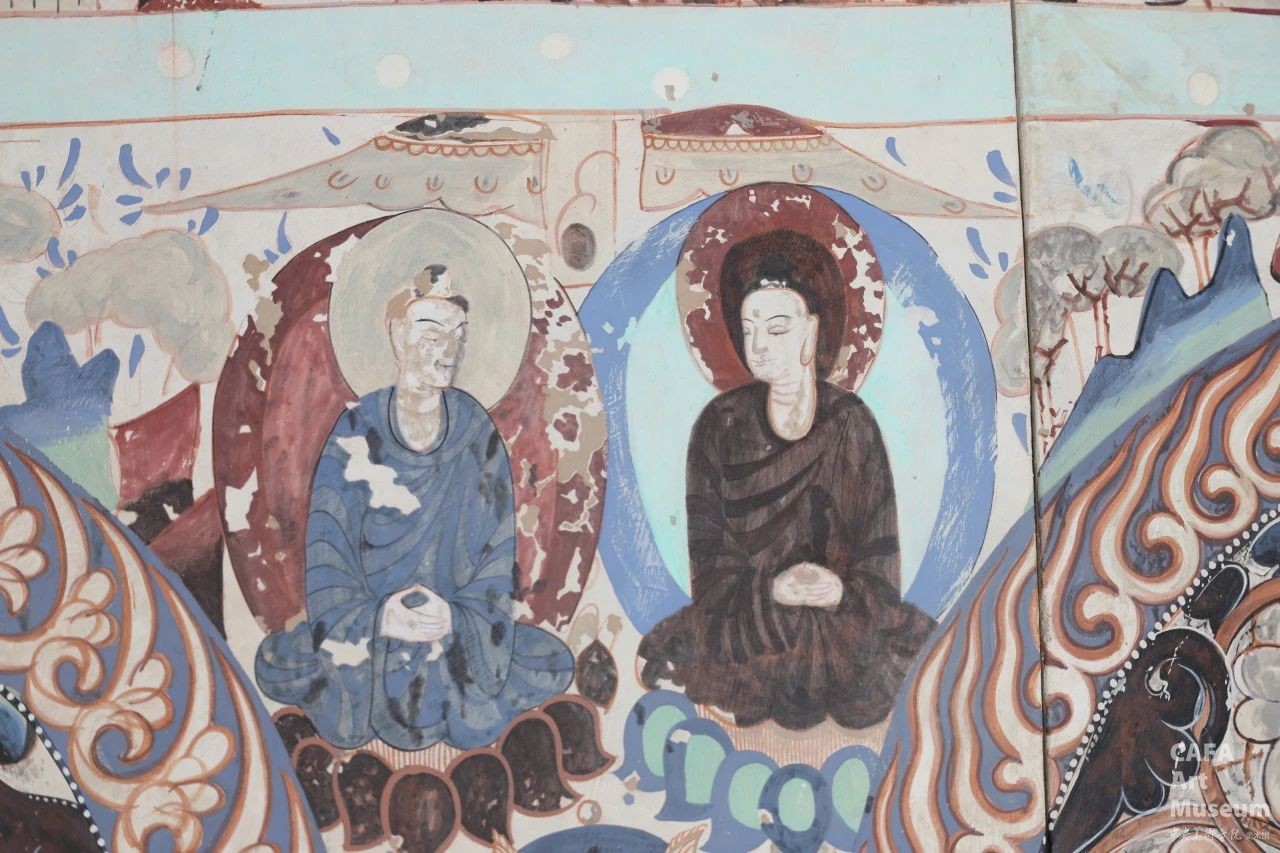
Liu Shiming, Detail of Current-State Copying on the Northern Wall
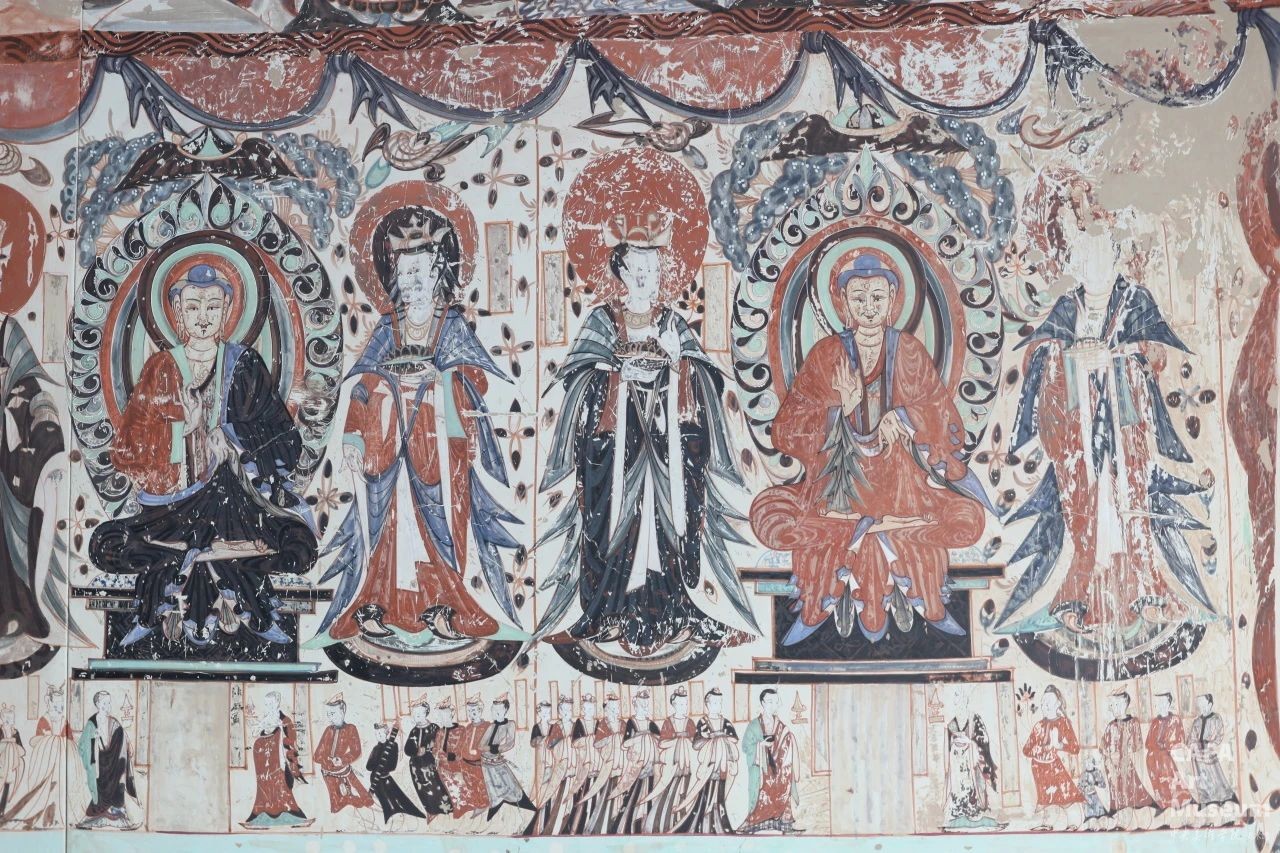
Ma Yue, Detail of Current-State Copying on the Northern Wall
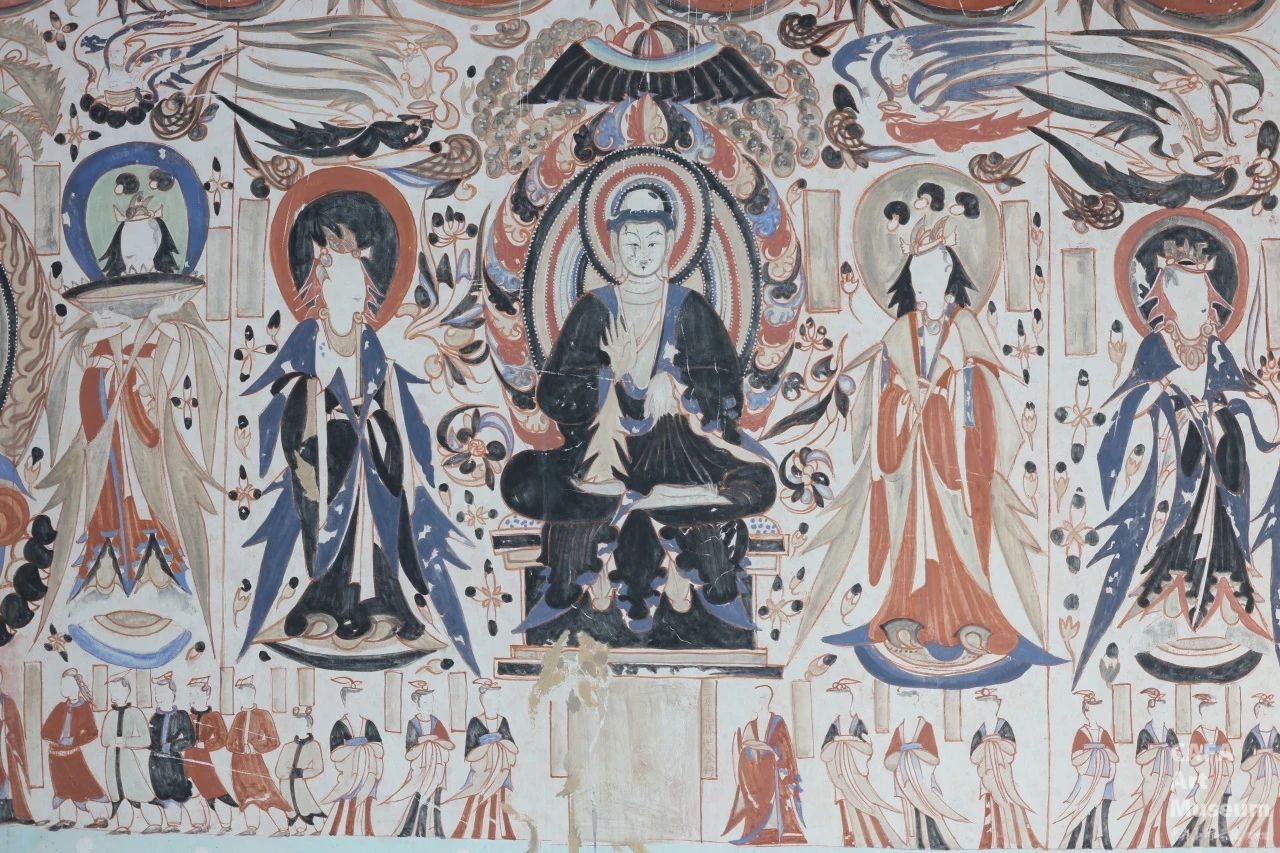
Hu Jing, Detail of Current-State Copying on the Northern Wall
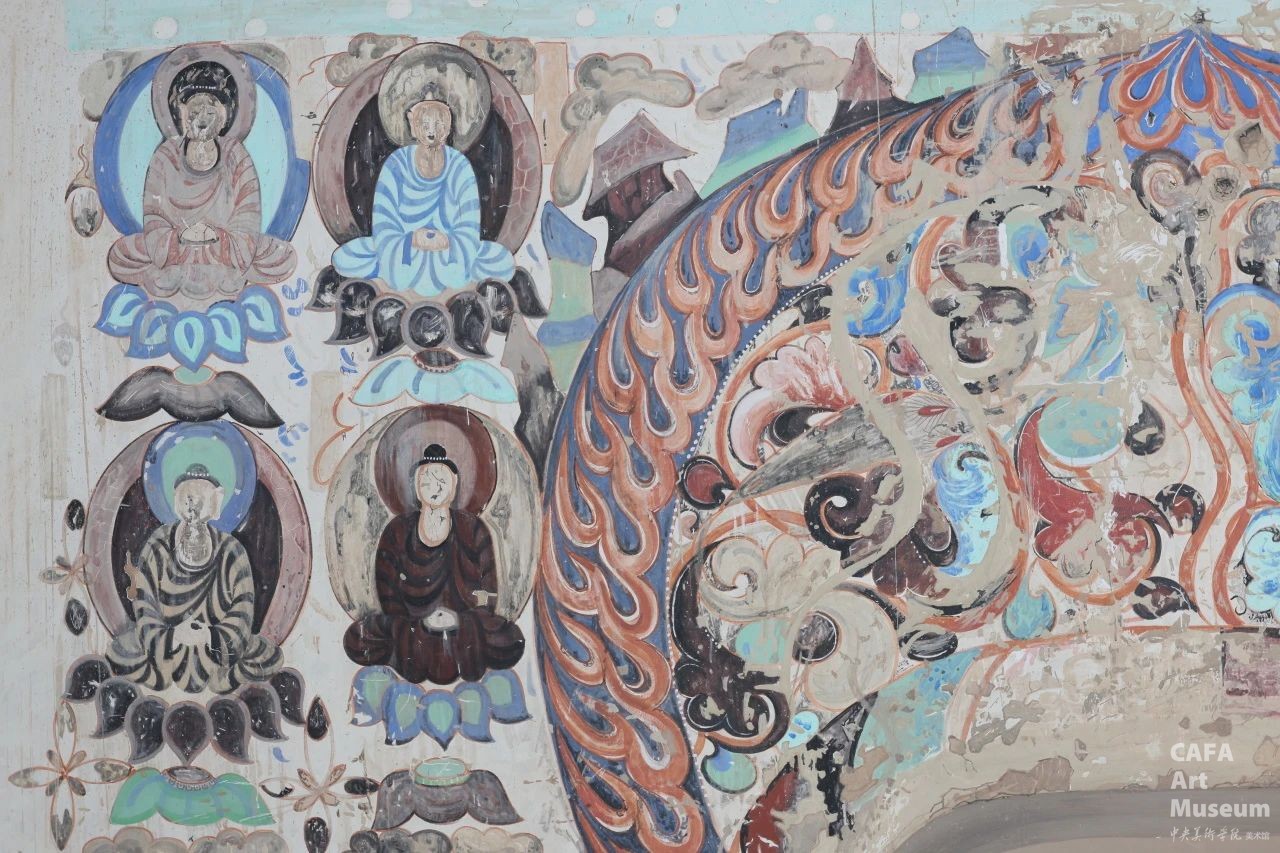
Wang Xueying, Detail of Current-State Copying on the Northern Wall
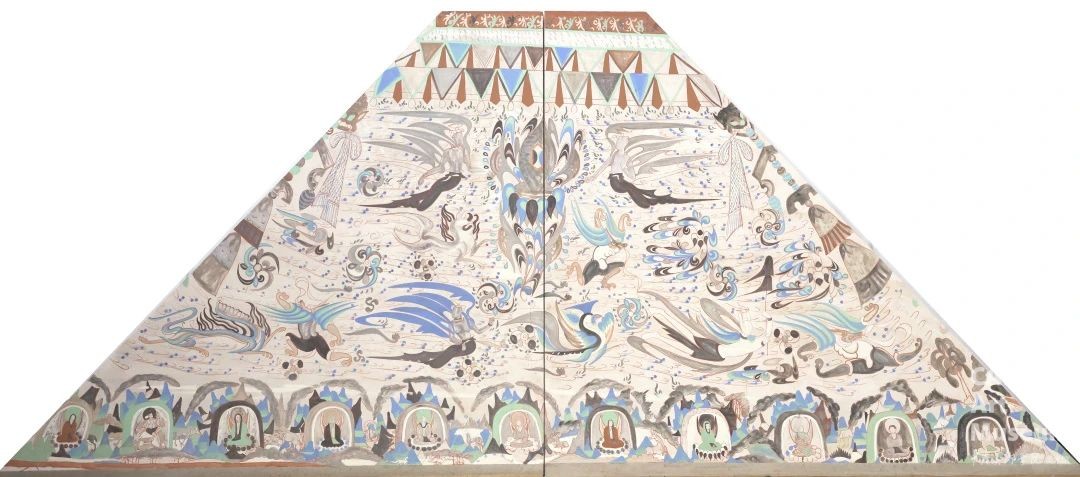
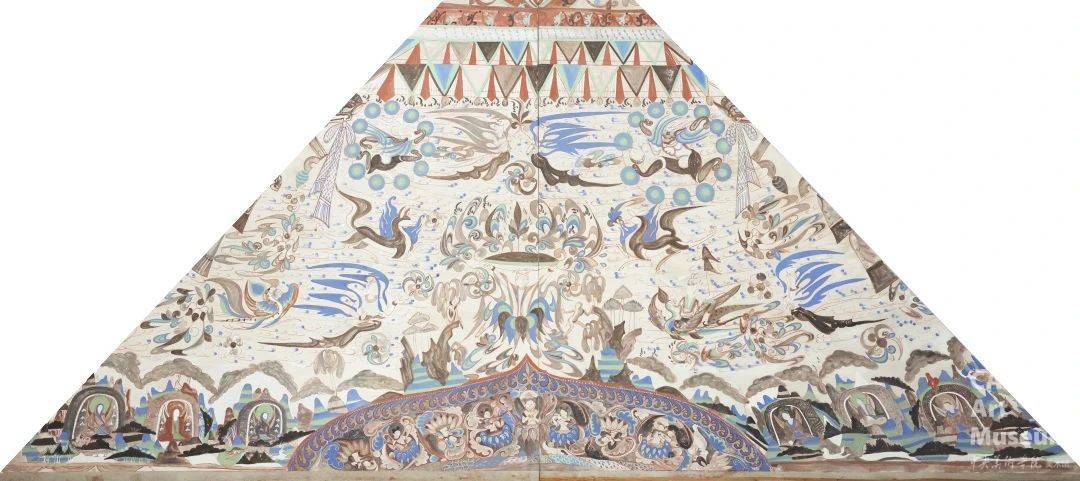
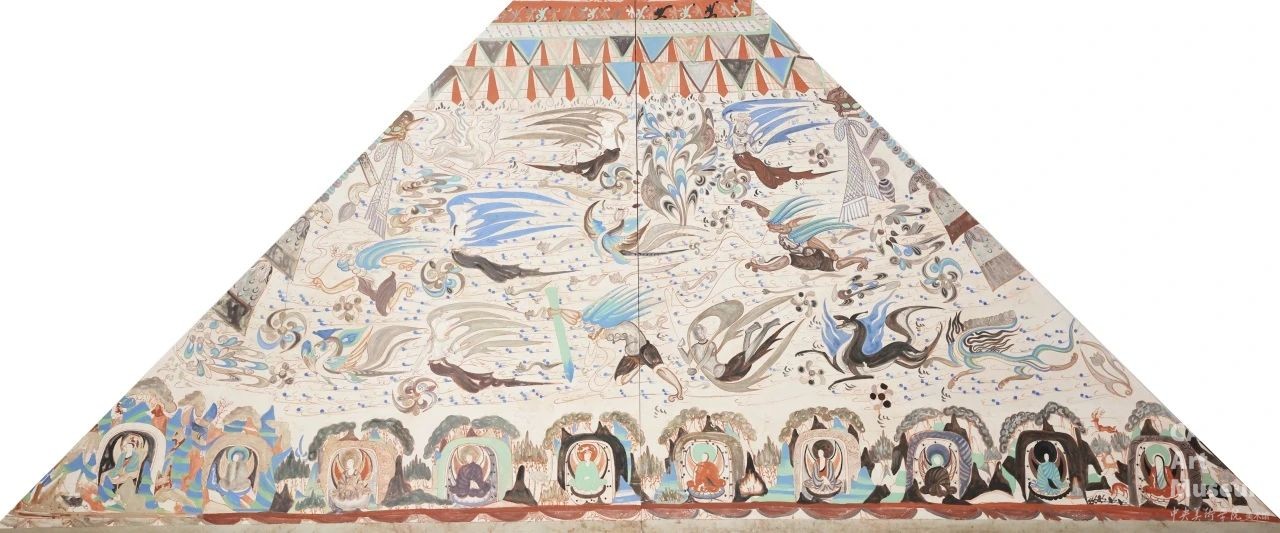
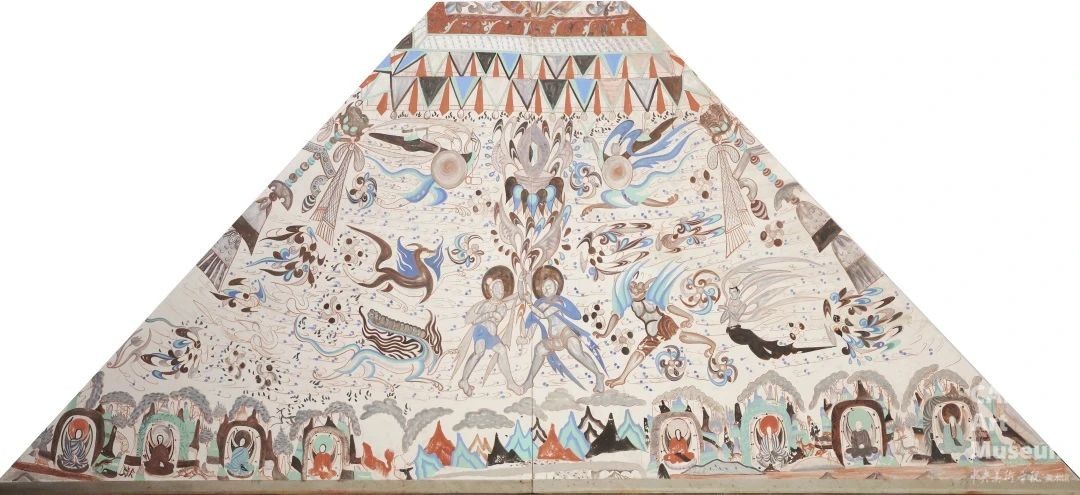
Current-State Copying of the Four-Slope Caisson Ceiling
Chinese Painting Restoration Studio
CAFAM@ 2025
Strive for loftiness and seek brilliance
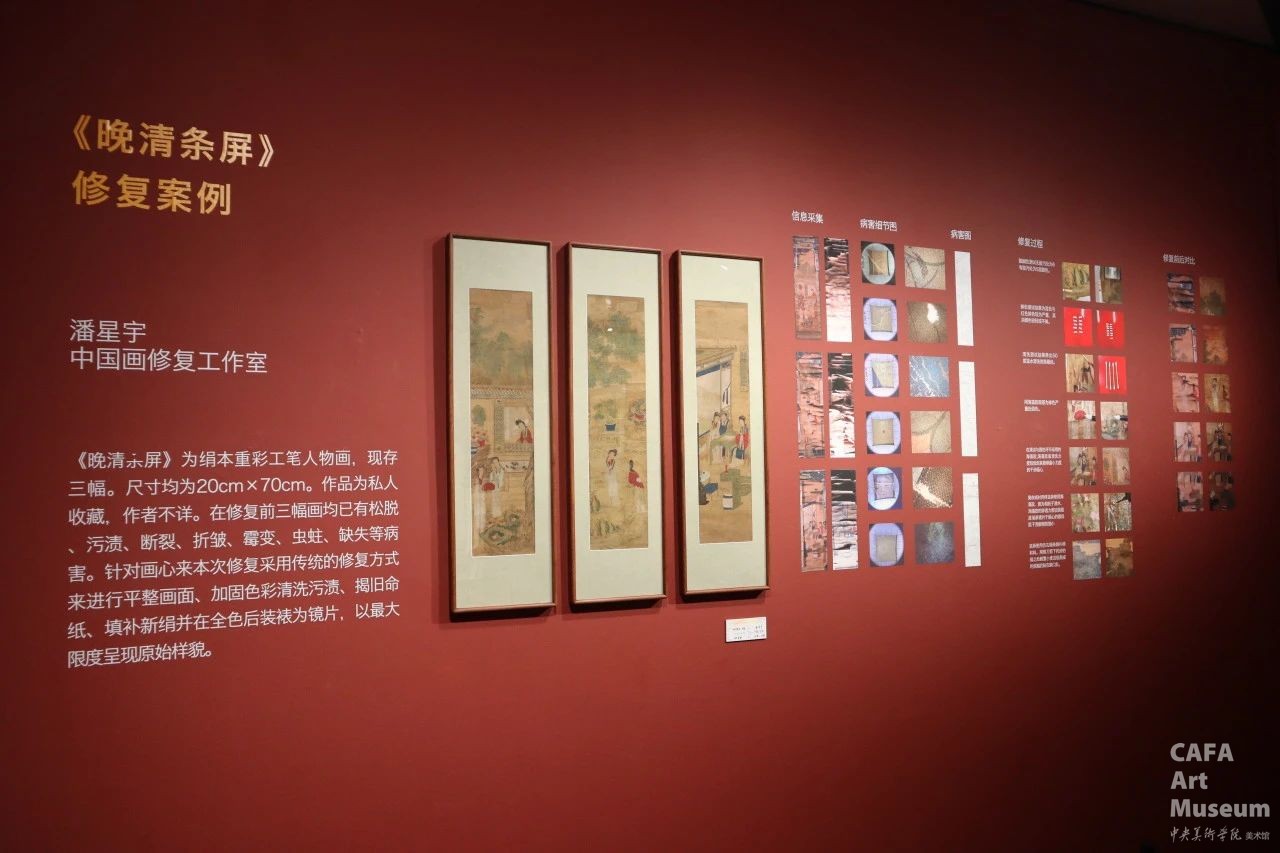
Pan Xingyu, Restoration Case of "Late Qing Scrolls"
The Late Qing Scrolls are heavy-color meticulous figure paintings on silk, with three pieces currently extant. Each measures 20cm × 70cm. The works are privately collected, and the author is unknown. Before restoration, all three paintings showed damages such as loosening, stains, fractures, wrinkles, mildew, insect damage, and losses. For the painting cores, this restoration adopted traditional methods to flatten the surface, reinforce colors, clean stains, remove the old backing paper, patch new silk, and mount them as framed works after color matching, so as to present the original appearance to the greatest extent.
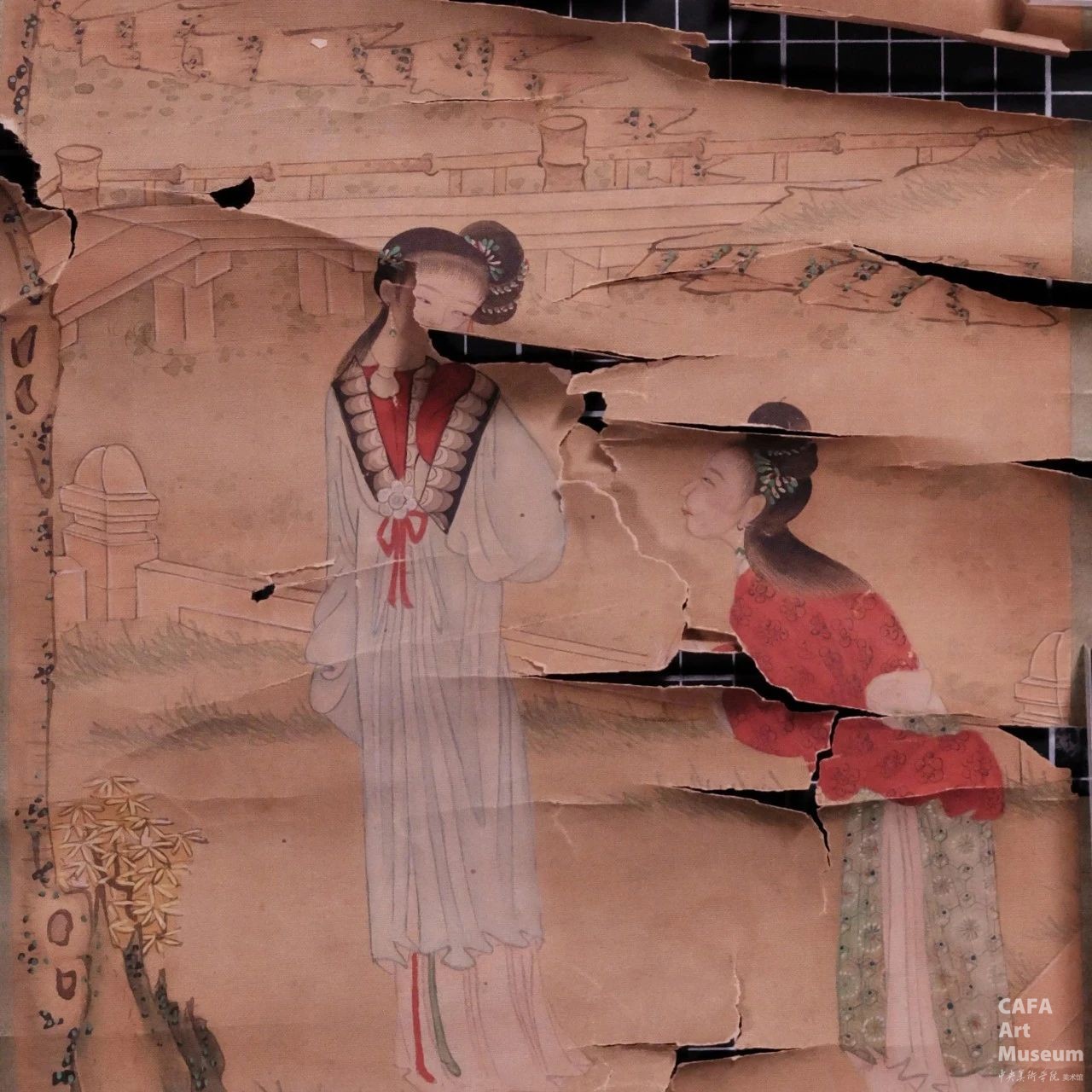
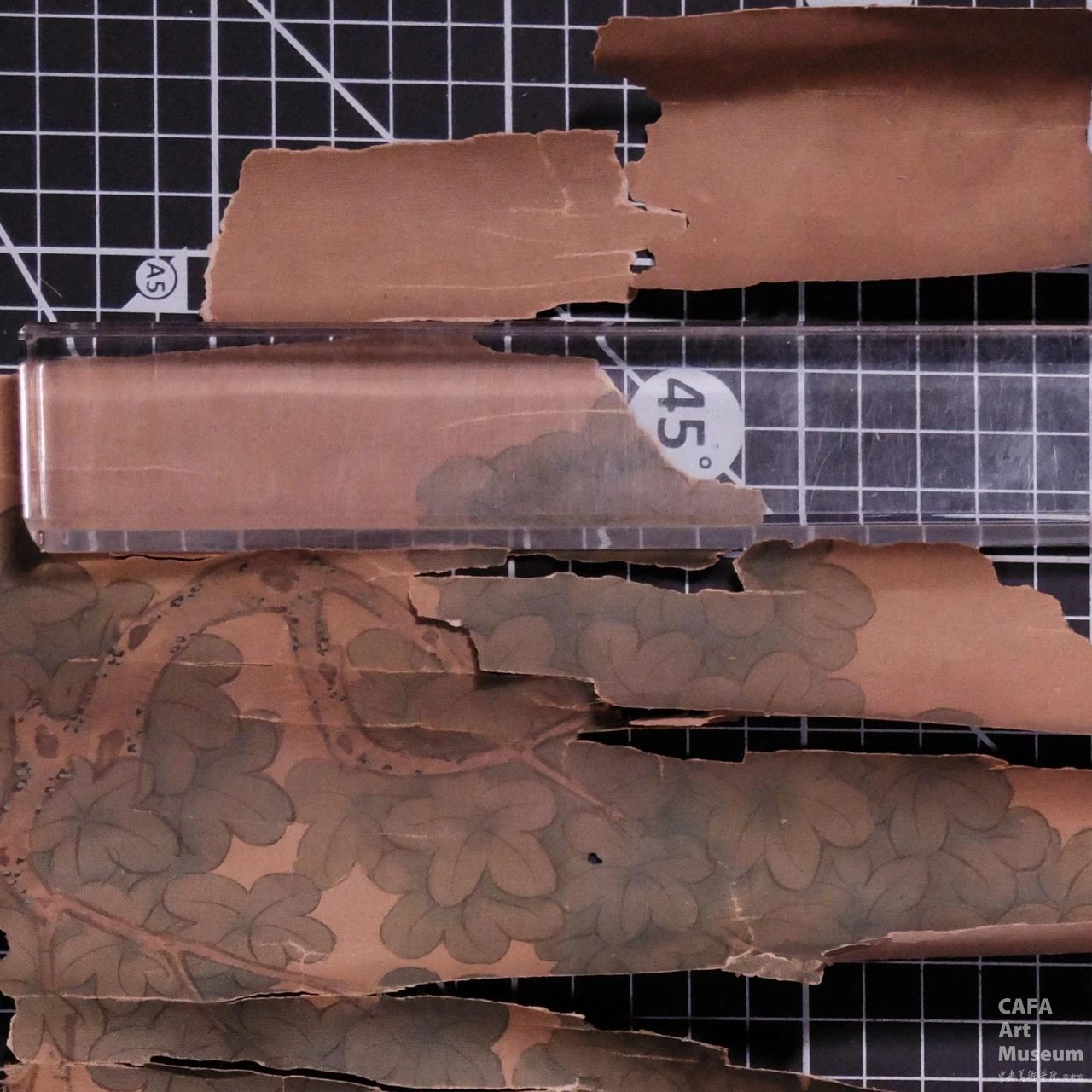
Before Restoration
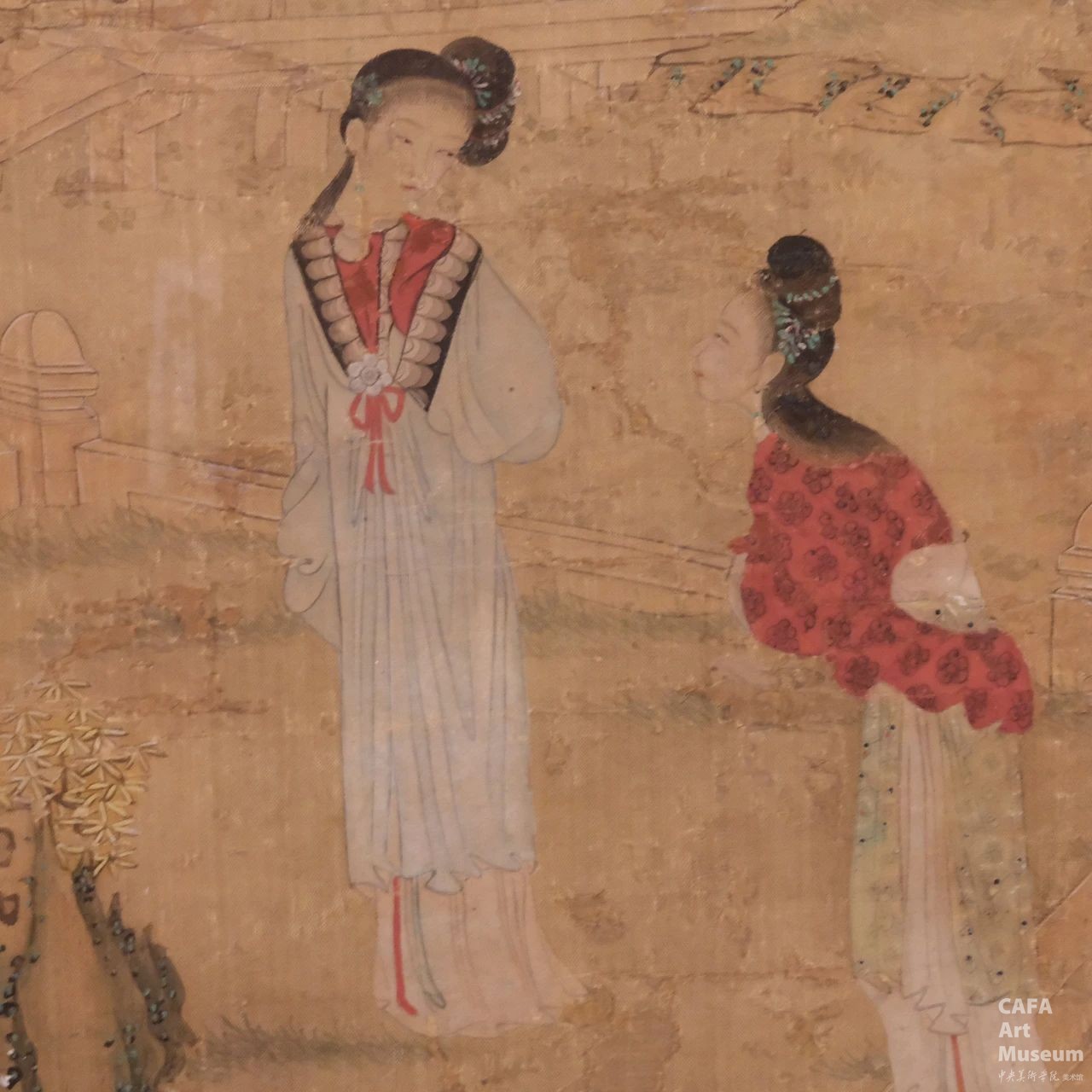
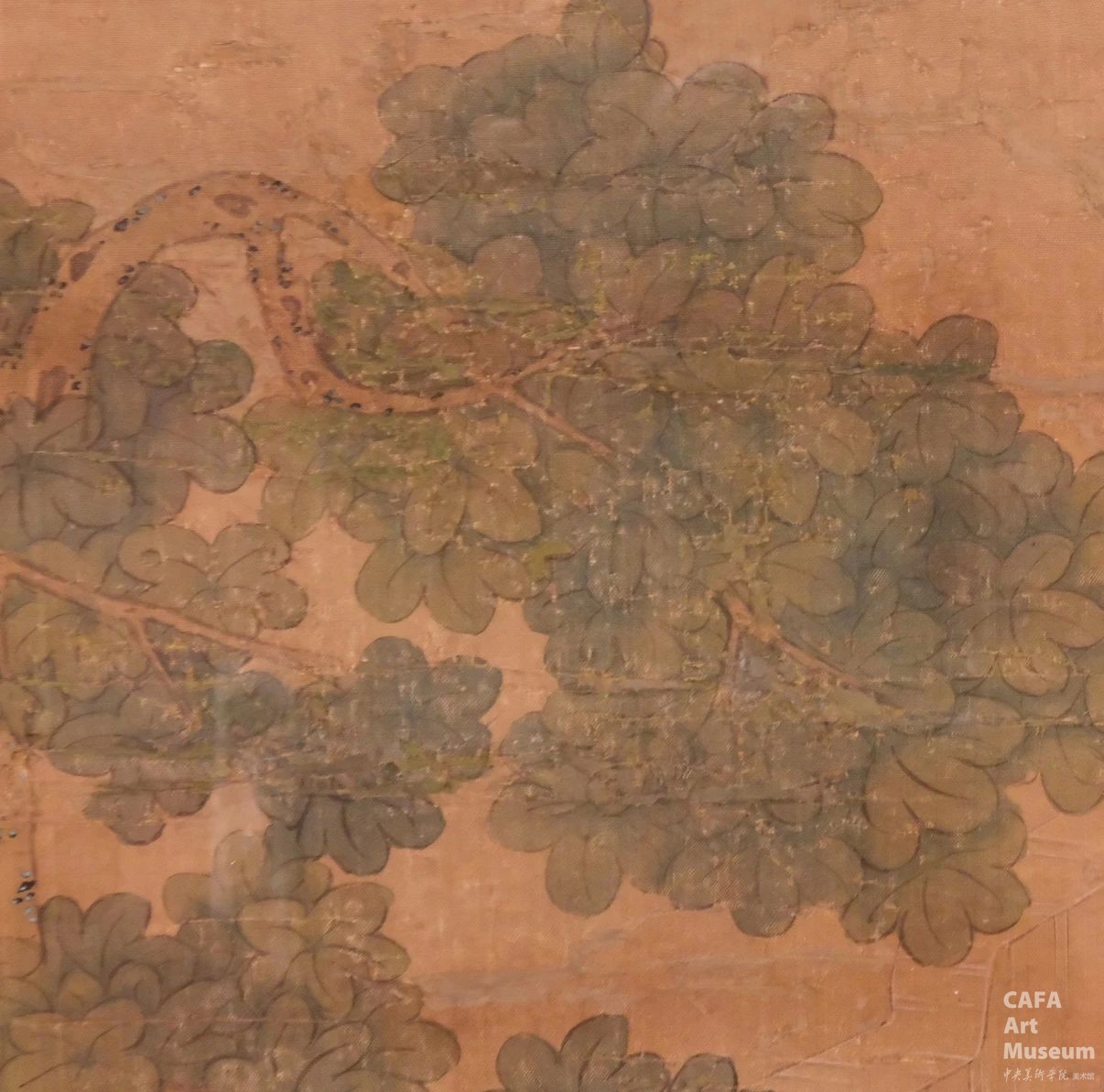
During Restoration
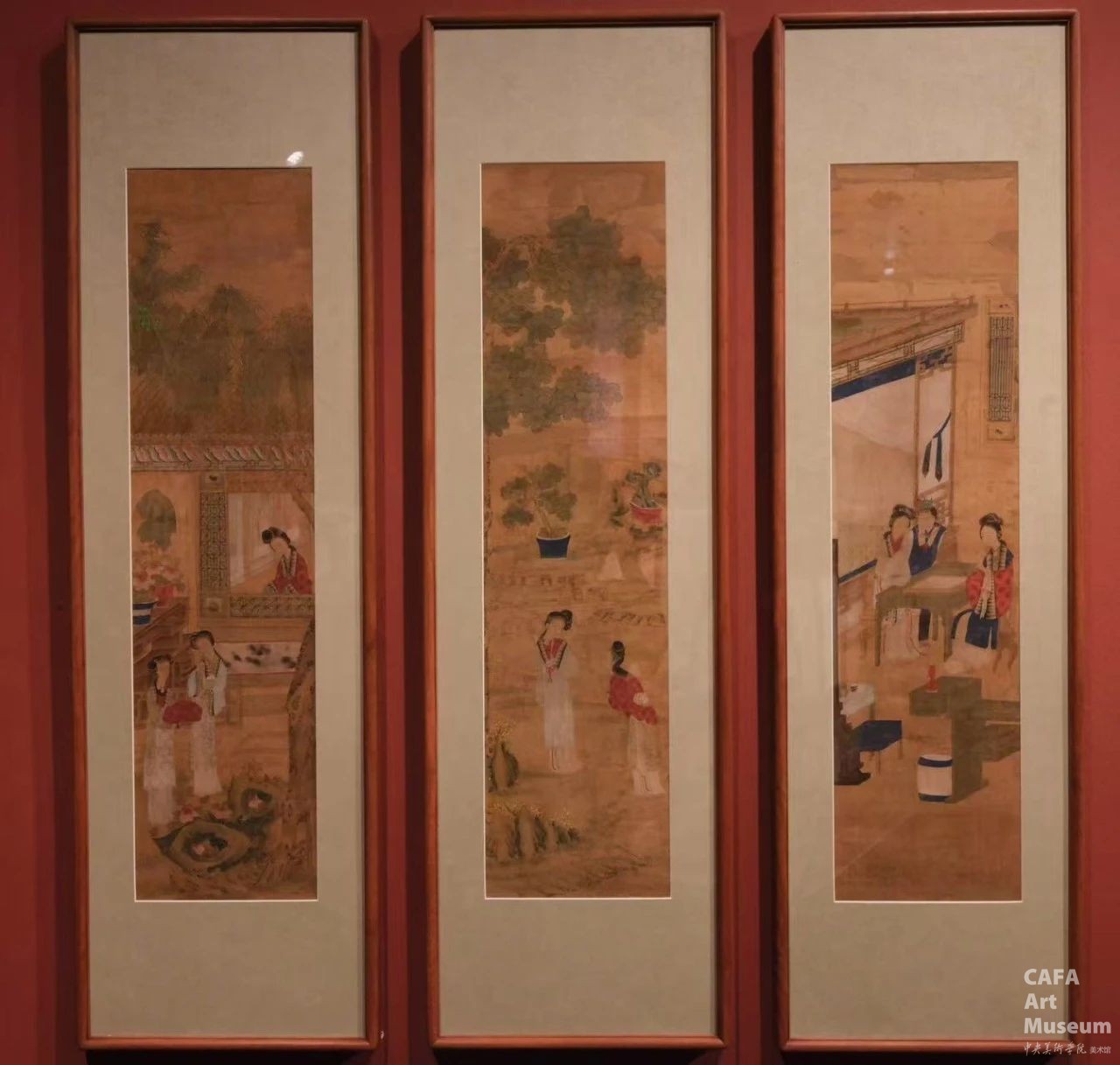
After Restoration
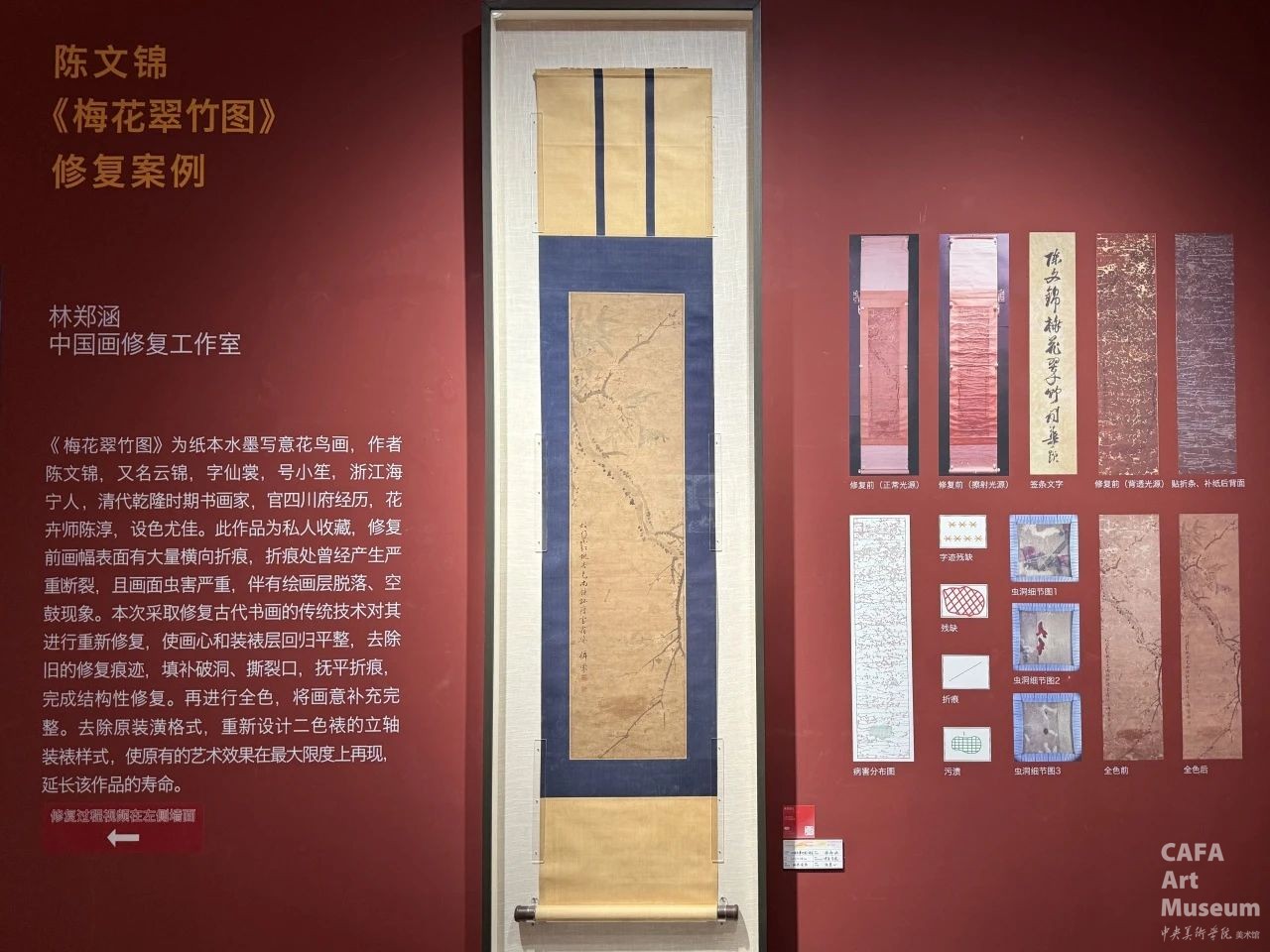
Lin Zhenghan, Restoration Case of Plum Blossom and Bamboo Painting
Plum Blossom and Bamboo Painting is a freehand flower-and-bird painting with colors on paper. The author, Chen Wenjin, also known as Yunjin, styled as Xianshang and titled as Xiaosheng, was a native of Haining, Zhejiang. He was a calligrapher and painter during the Qianlong period of the Qing Dynasty, serving as an official in Sichuan Prefecture. Specializing in flower painting under the influence of Chen Chun, he excelled in color application. This work is in private collection. Before restoration, the painting surface had numerous horizontal creases, with severe fractures at the crease positions, serious insect damage, and phenomena of paint layer detachment and hollowing. It had undergone multiple improper restorations previously. This restoration adopted traditional techniques for ancient calligraphy and painting to re-restore it, making the painting core and mounting layer return to flatness, removing old restoration traces, patching holes and tears, smoothing creases, and completing structural restoration. Then color matching was carried out to supplement the painting meaning completely. The original decoration format was removed, and a vertical scroll mounting style with two-color mounting was re-designed to maximize the reproduction of the original artistic effect and extend the lifespan of the work.
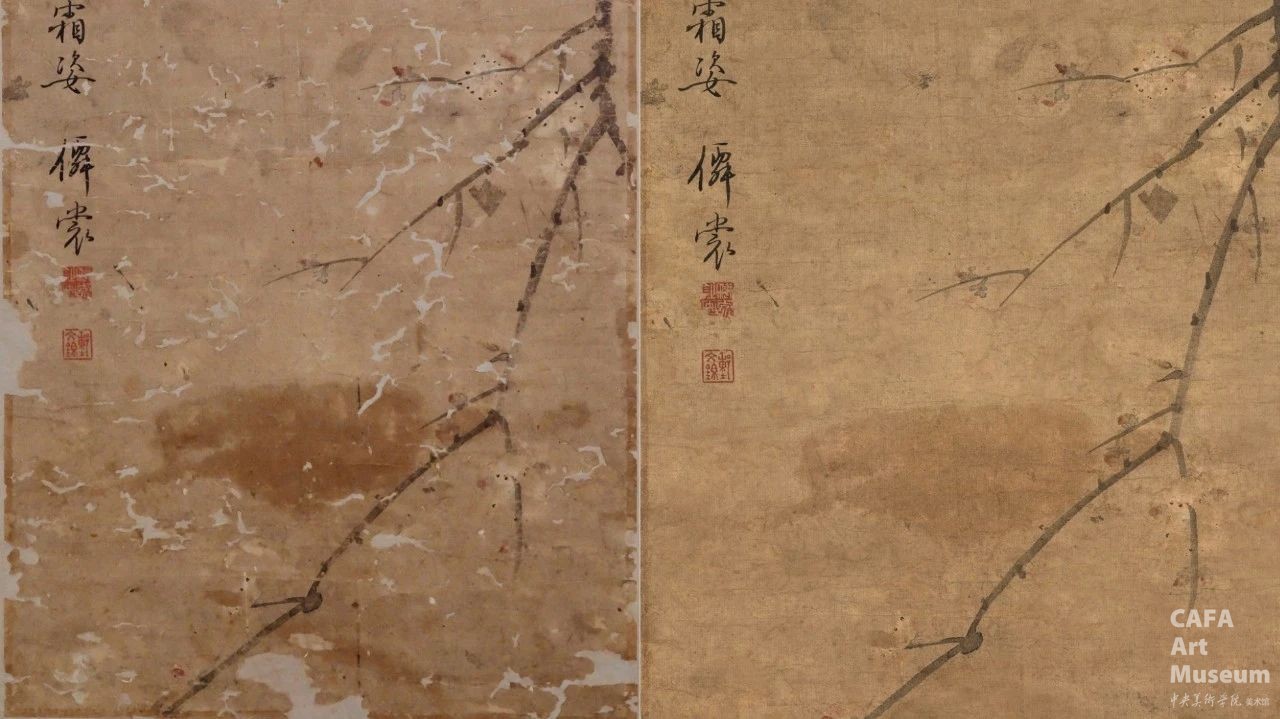
Comparison Before and After Color Matching
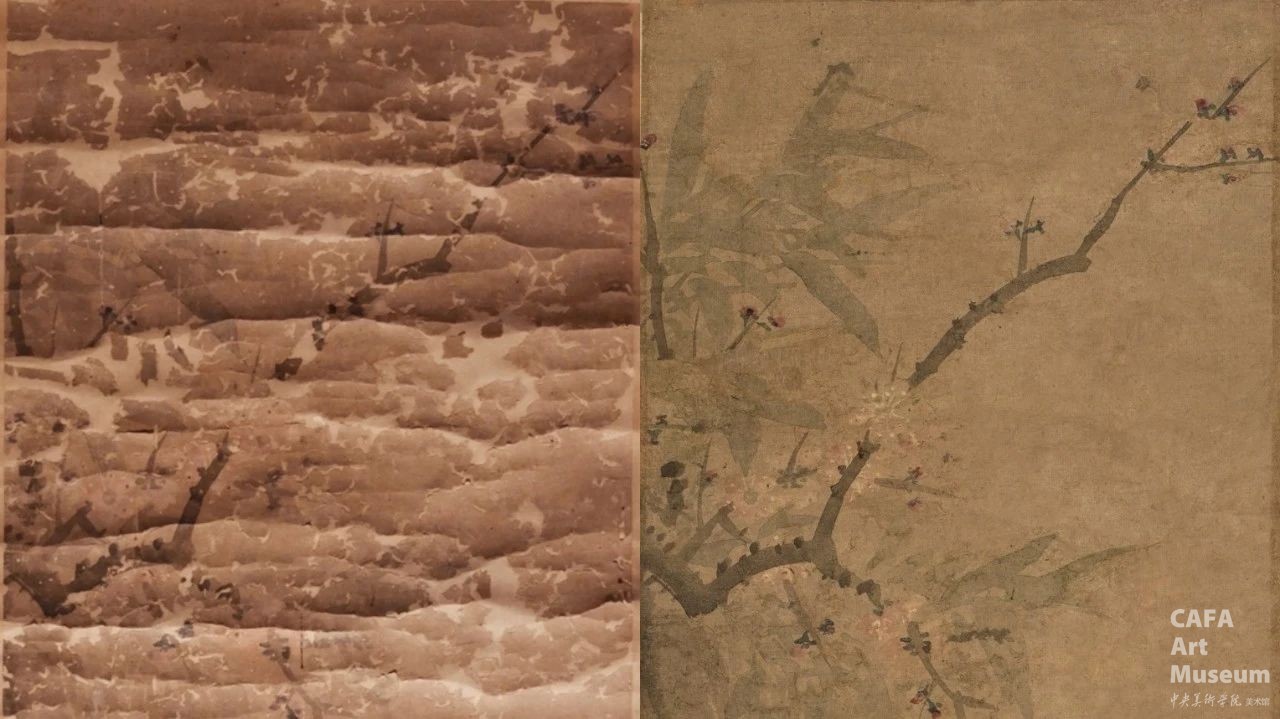
Comparison of Restoration Details Before and After
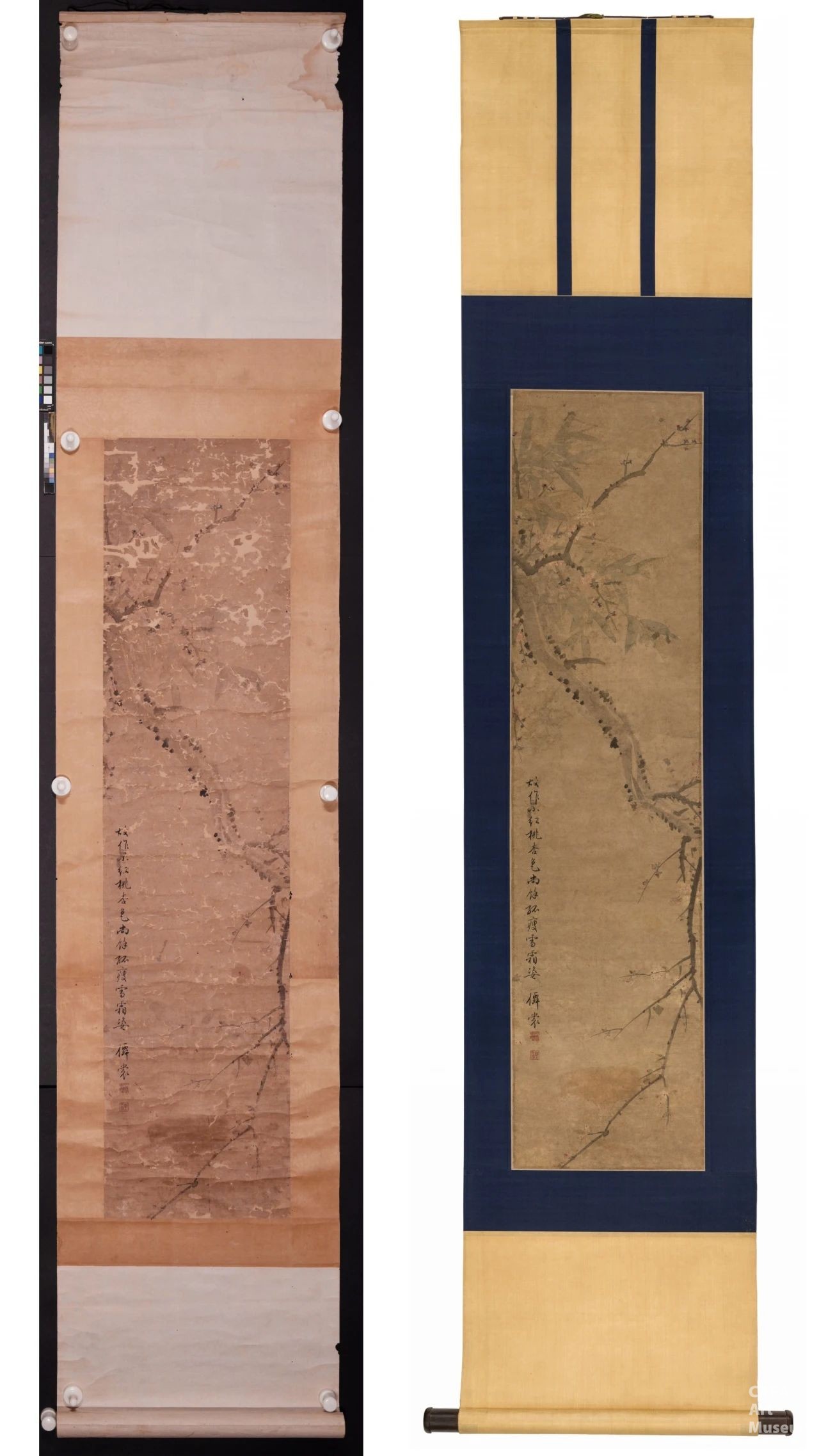
Comparison Before and After Restoration
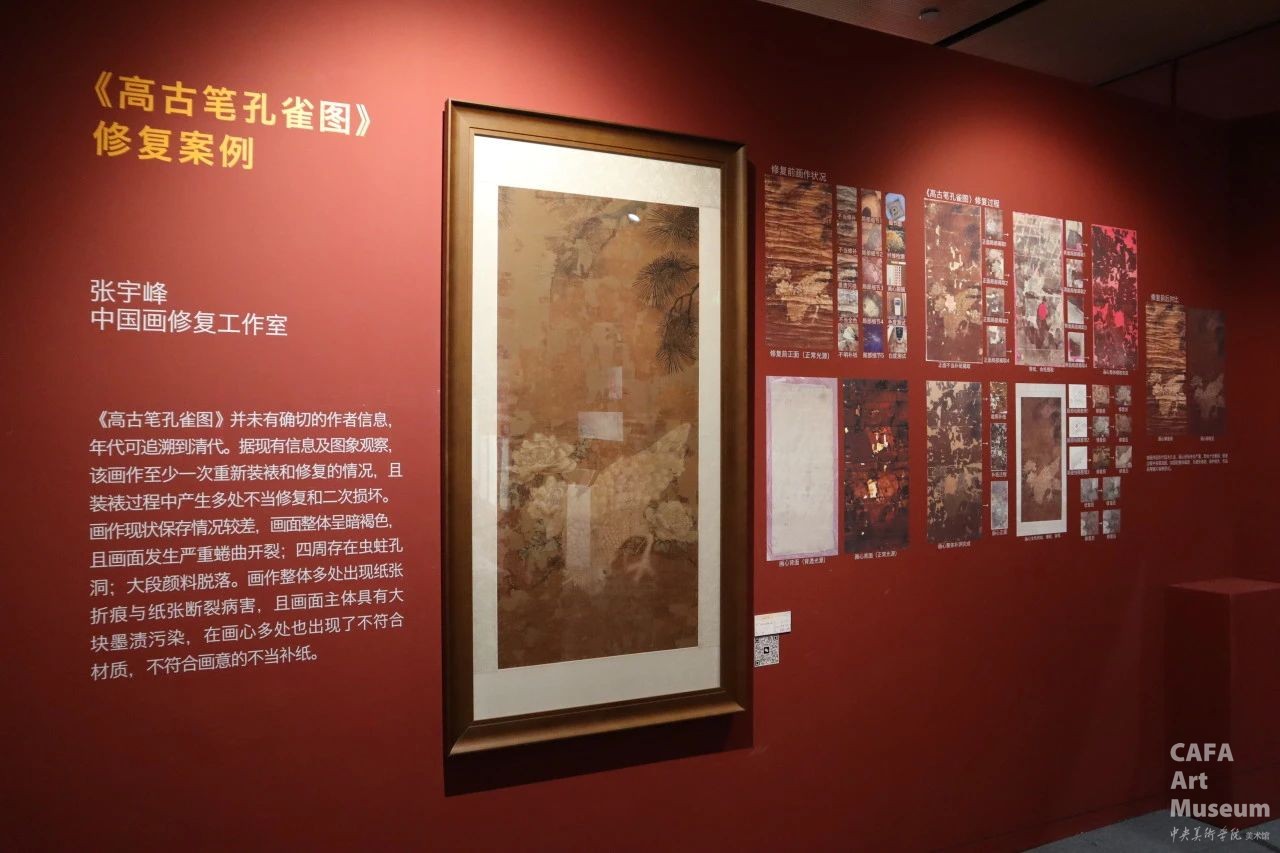
Zhang Yufeng, Restoration Case of Peacock Painting in Archaic Brushwork
Peacock Painting in Archaic Brushwork has no definite author information, and its date can be traced back to the Qing Dynasty. According to existing information and image observation, the painting has undergone at least one re-mounting and restoration, with multiple improper restorations and secondary damages occurring during the mounting process. The current preservation condition of the painting is poor: the overall picture appears dark brown, with severe curling and cracking; there are insect holes around the edges; large sections of pigments have fallen off. The painting as a whole has multiple paper creases and fractures, and the main body of the picture is contaminated by large ink stains. In many parts of the painting core, there are inappropriate paper patches that do not match the material or the artistic conception of the painting.

Restoration Process
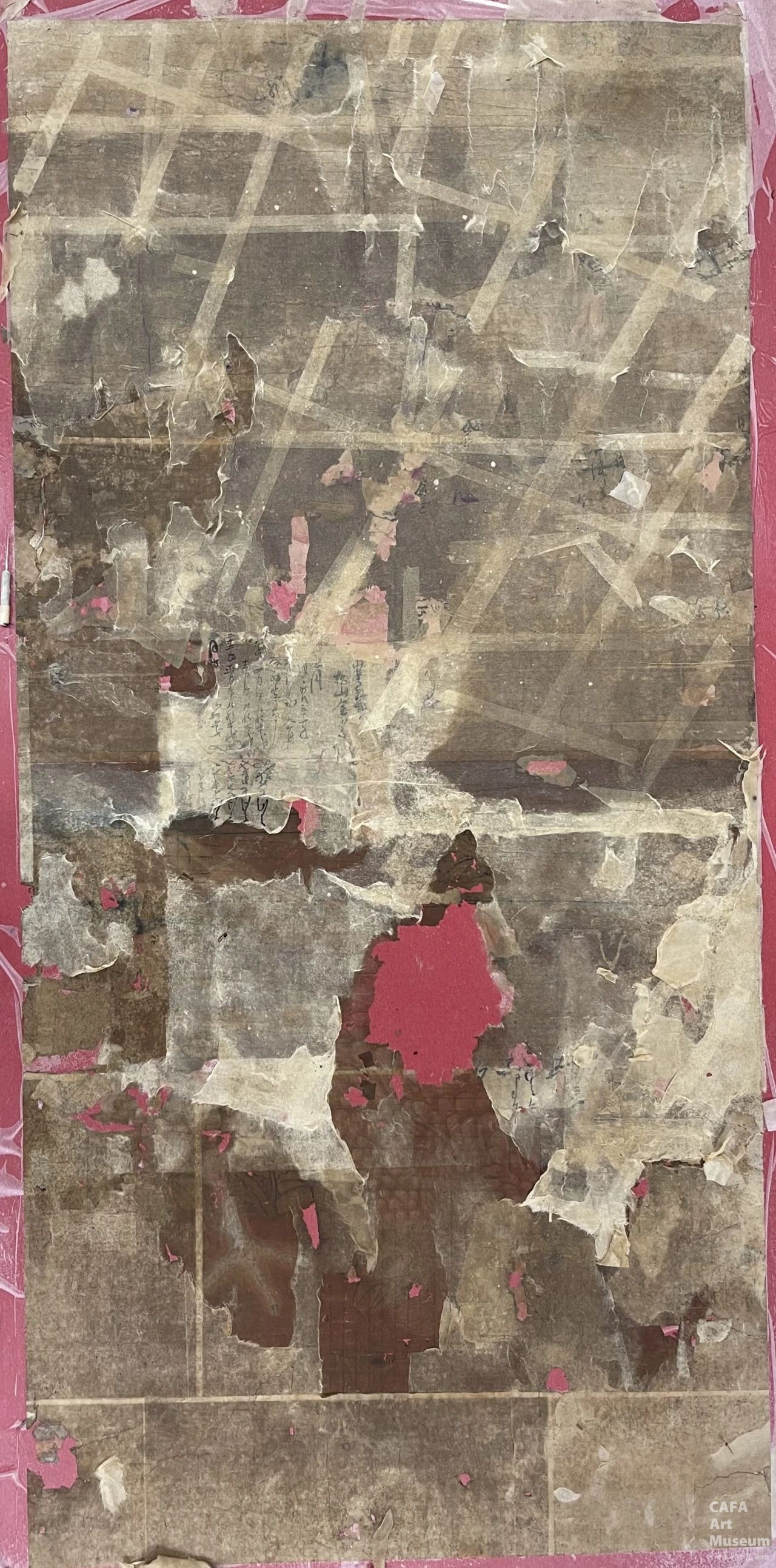
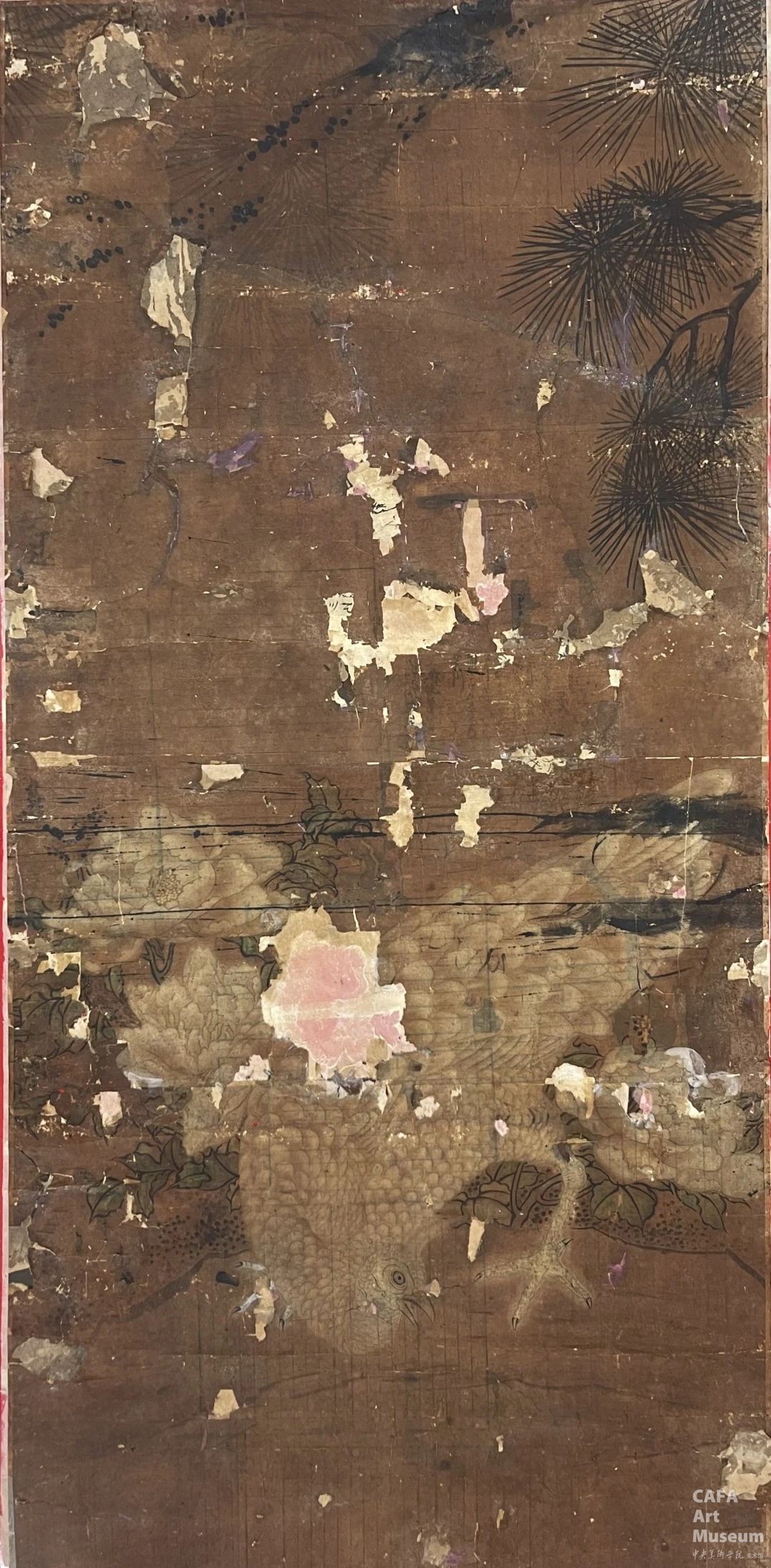
Before Restoration
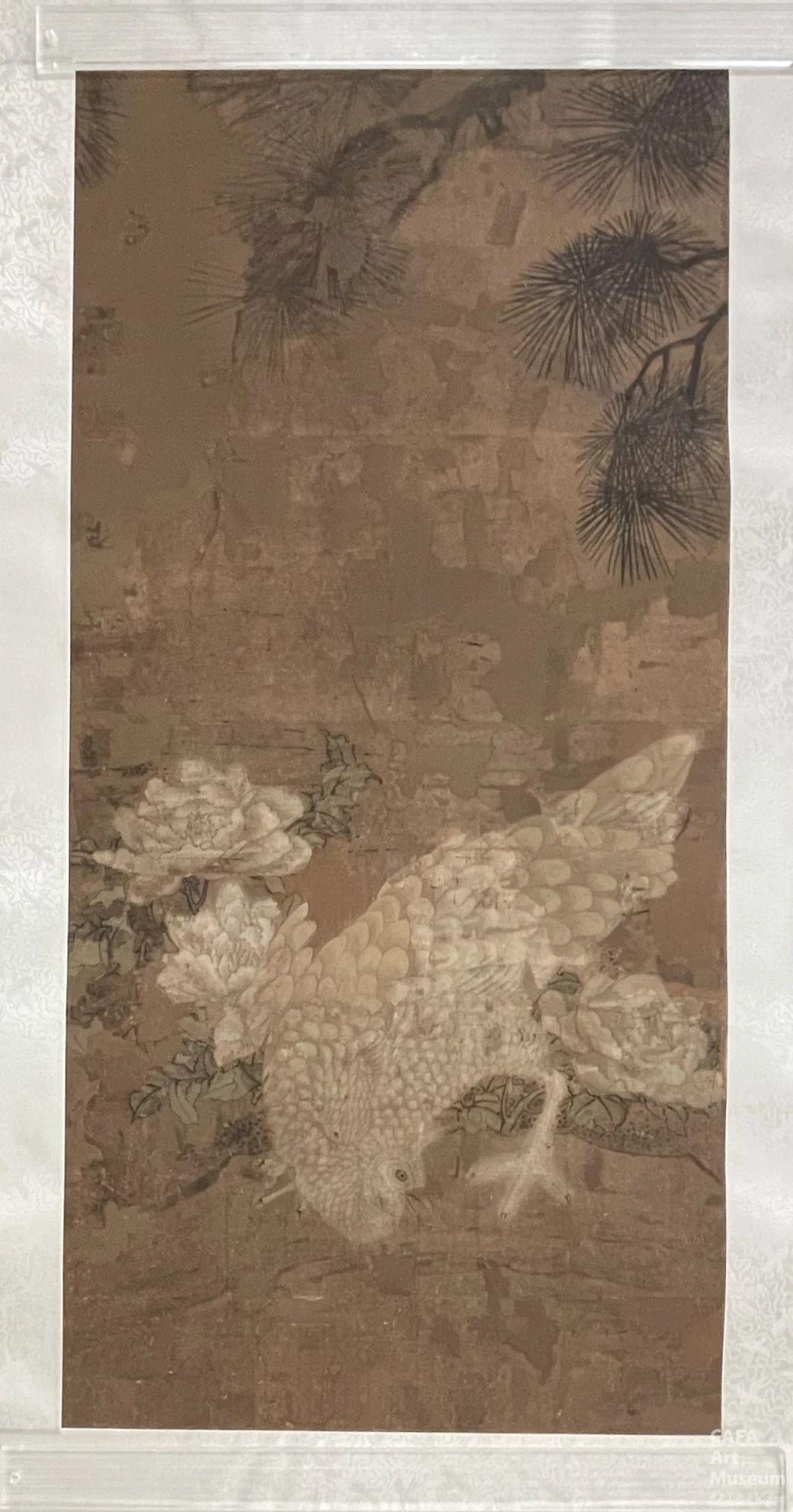
After Restoration
Oil Painting Restoration Studio
CAFAM@ 2025
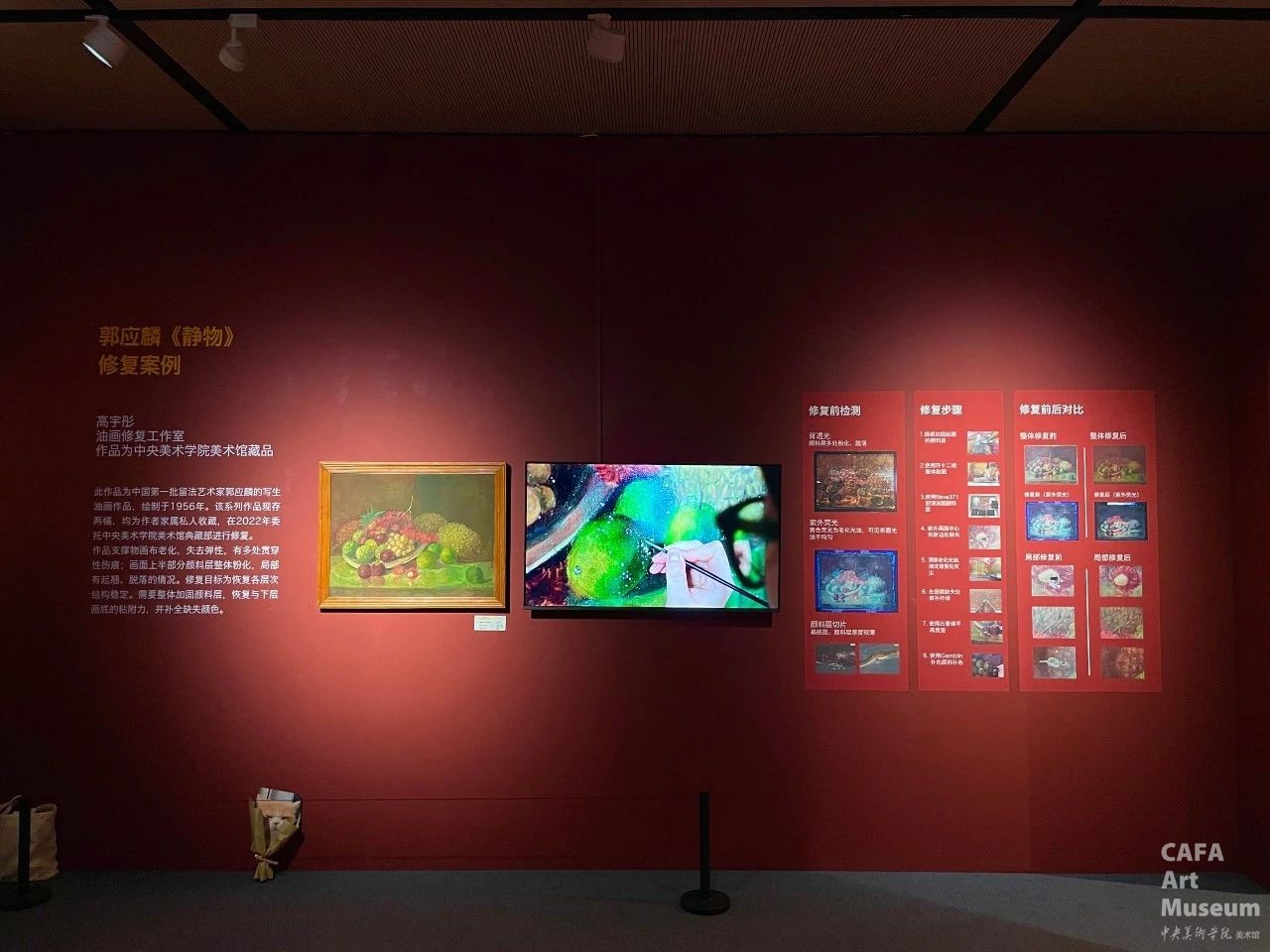
Guo Yinglin, Restoration Case of Still Life, an Oil Painting on Canvas
This work is a sketch oil painting by Guo Yinglin, one of the first batch of Chinese artists to study in France, painted in 1956. Two still-life works of this series are currently extant, both privately collected by the artist's family. In 2022, they entrusted the Collection Department of the Art Museum of the Central Academy of Fine Arts to carry out restoration. The support canvas of the work has aged, lost its elasticity, and has multiple penetrating scars; the pigment layer in the upper half of the picture has overall pulverized, with local warping and peeling conditions. The restoration goal is to restore the structural stability of each layer. It is necessary to comprehensively reinforce the pigment layer, restore the adhesion to the underlying painting ground, and complete the missing colors.
The pigment layer of Guo Yinglin's oil painting Still Life has large-area pulverization and peeling, and has water-sensitive characteristics, requiring overall reinforcement. The restoration difficulties of this work are how to reinforce the loose, pulverized, and water-sensitive pigment layer; and what kind of temporary reinforcement material to choose can achieve good adaptability with subsequent operations such as overall back reinforcement and surface cleaning.
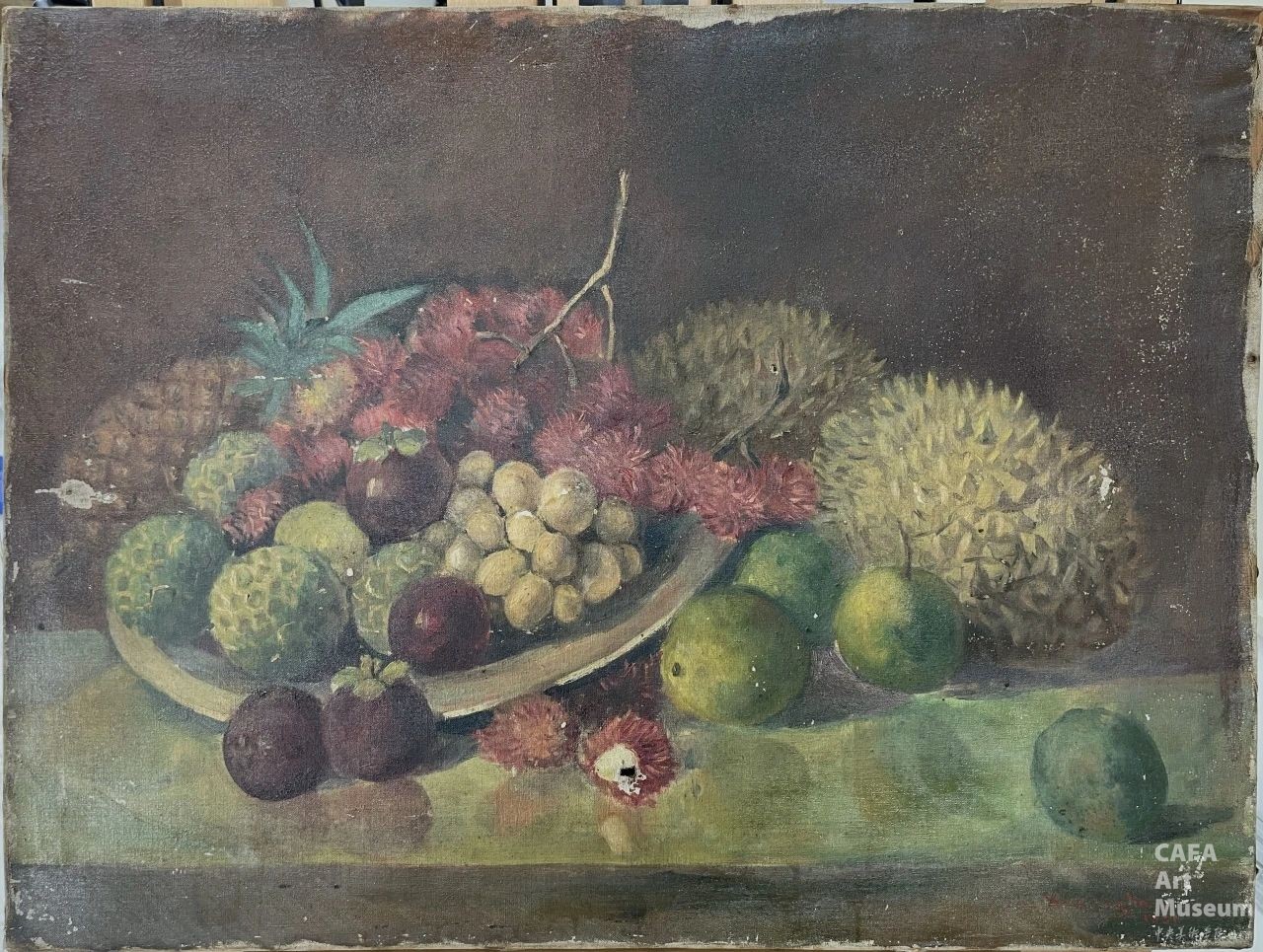
修复前
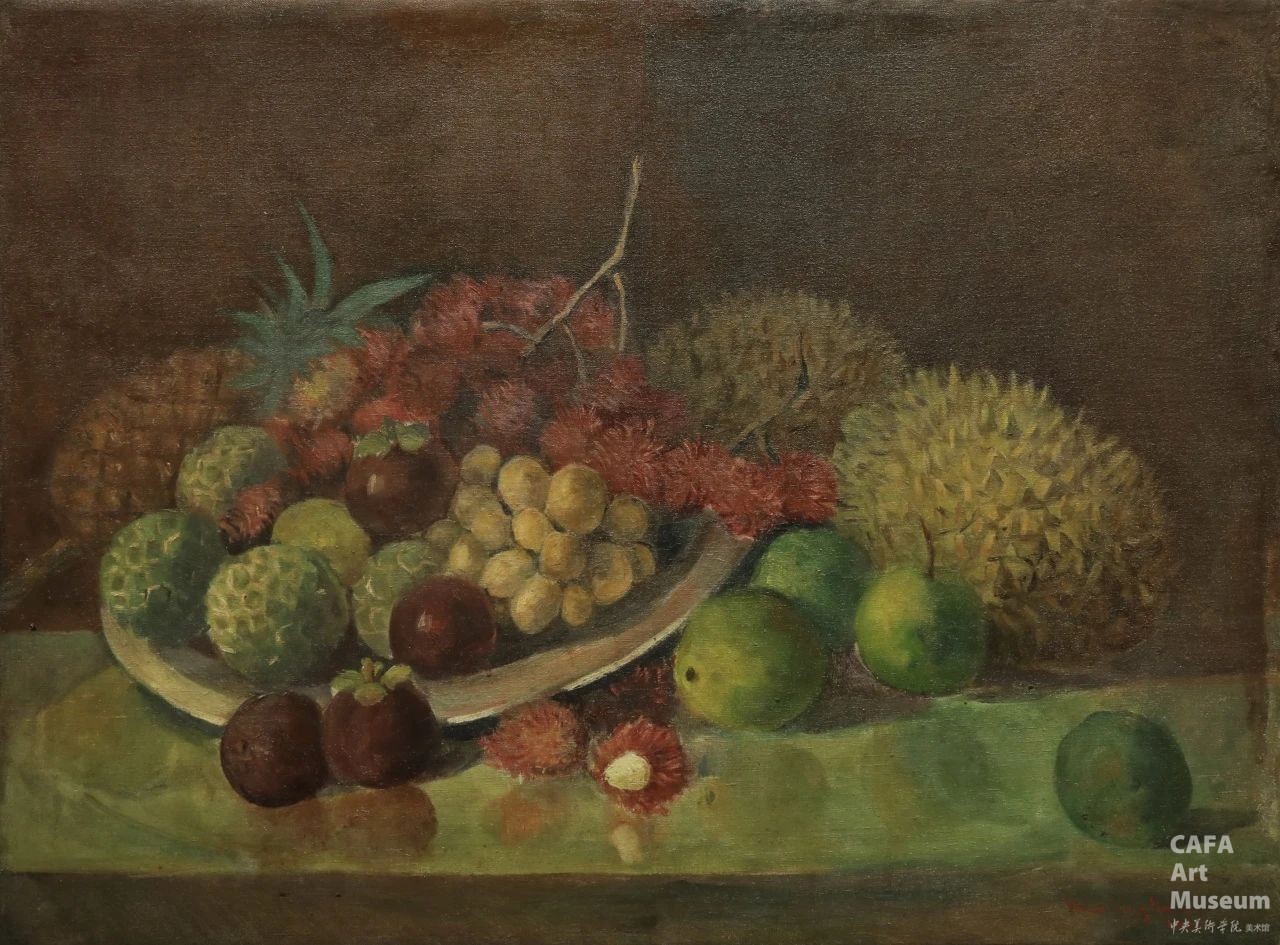
修复后

韦启美 布面油画《女人体习作》修复案例
此作品画布长期无内框支撑,棉质画布已无法支撑开裂的绘画层,需通过背面整体衬托的措施承担画布平面应力。但画布背面存在内容为作者名字的落款,需通过实验设计力求在结构稳定的同时最大程度保留文字信息的可读性。作者通过以下两点展开修复过程:一、加固颜料层、平整并衬托画布,解决作品颜料层碗状变形、画布平面变形的结构问题,通过衬托新的支撑材料承载平面结构力量,并绷于内框上使内部应力保持平衡。同时尽可能最大化保留背面手写字迹。2、画面表面清洁并填补颜料层缺失,以达到审美和谐和视觉可读。
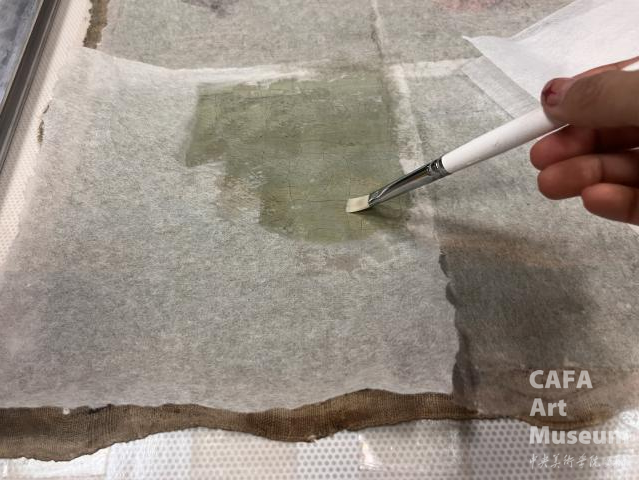
临时贴面加固不稳定的颜料层
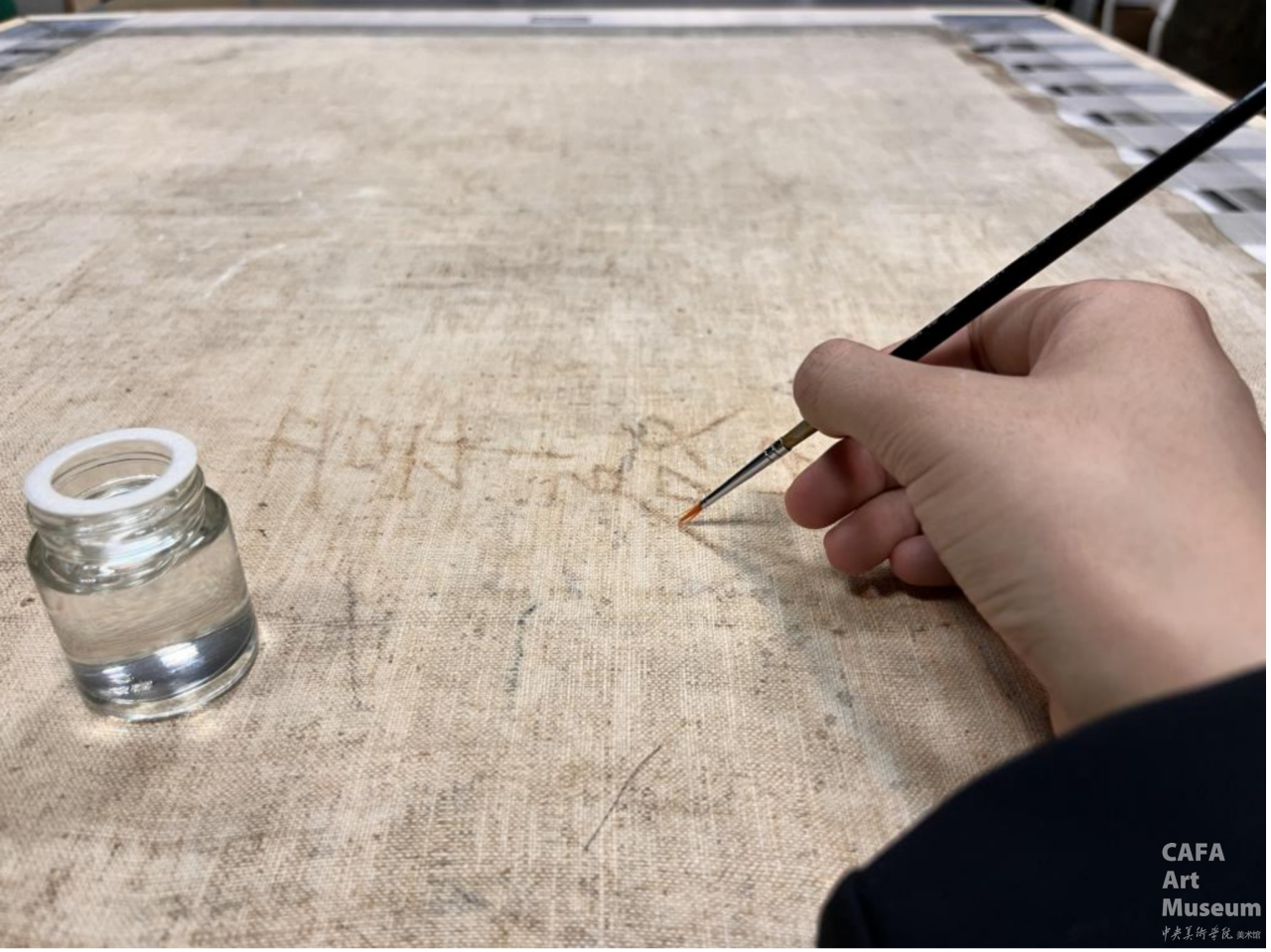
局部封护字迹并整体涂刷Beva371粘合剂加固
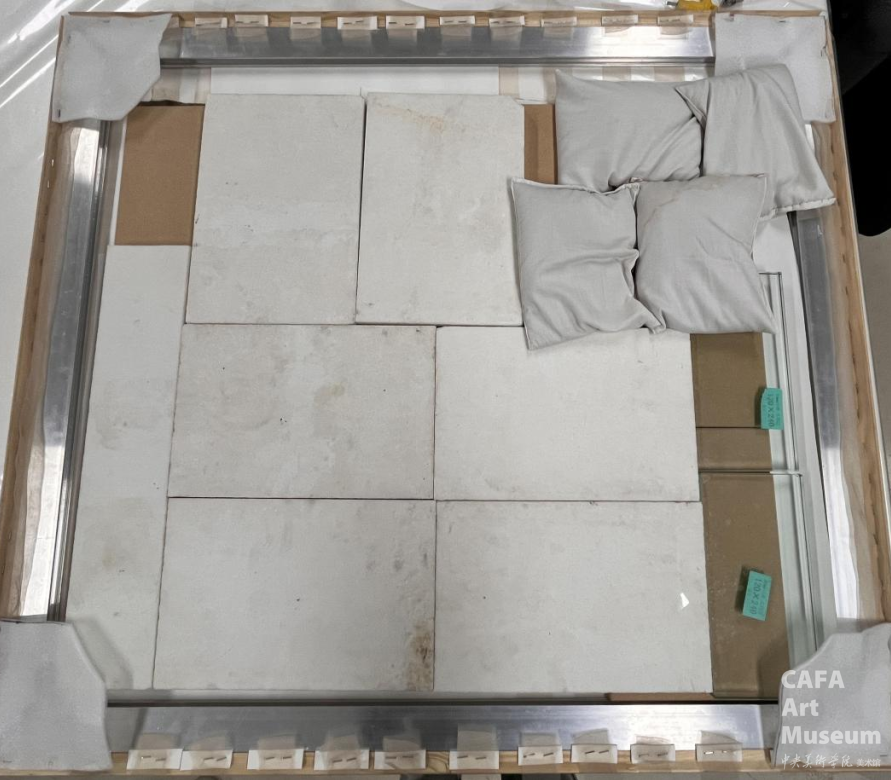
加湿并压重,平整画布变形
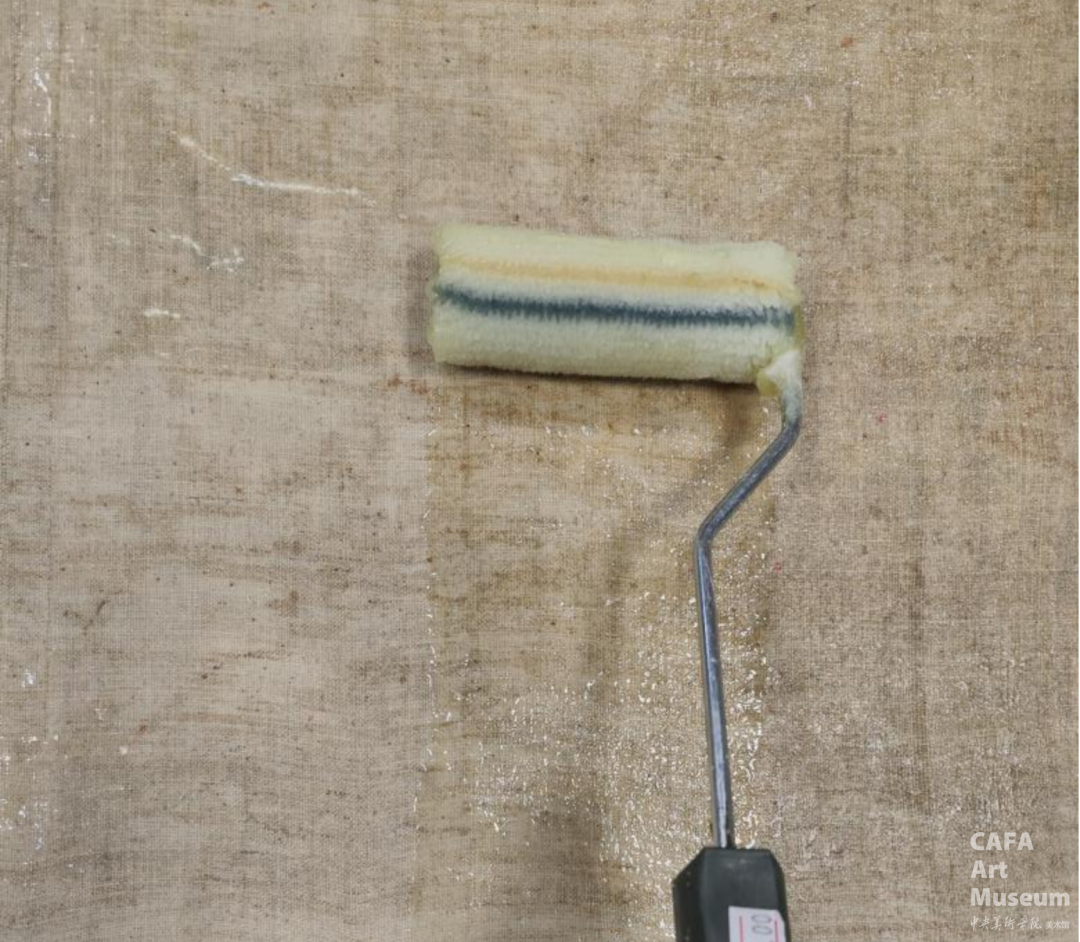
背面涂刷Beva371粘合剂,并绷上聚酯丝网
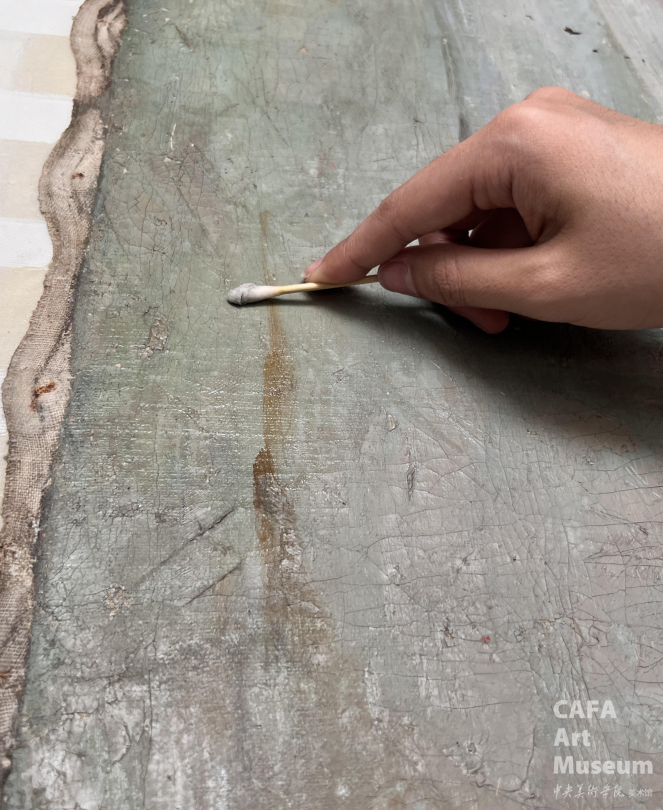
蒸馏水清洗颜料层表面尘垢
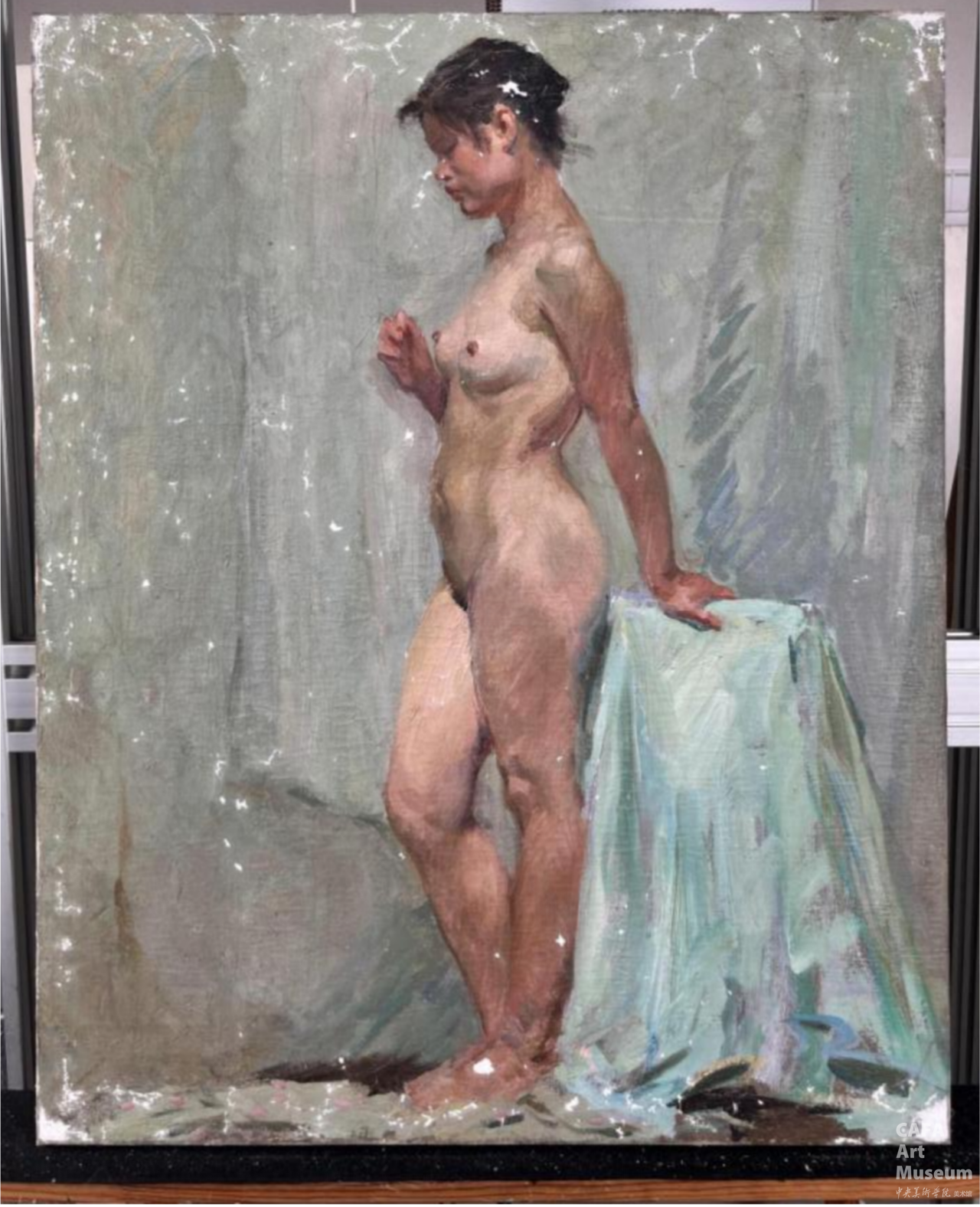
填补缺失的基底层
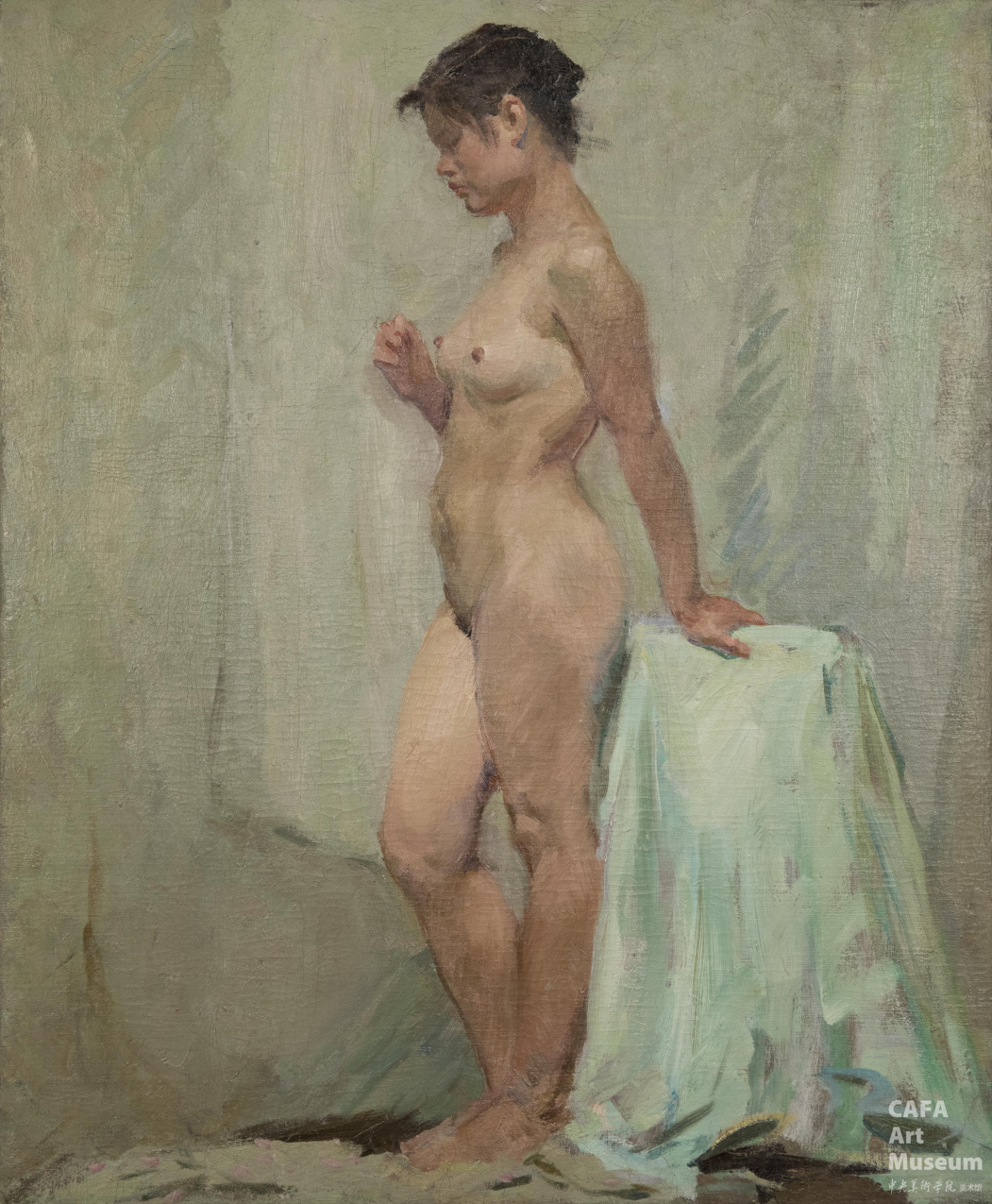
修复后
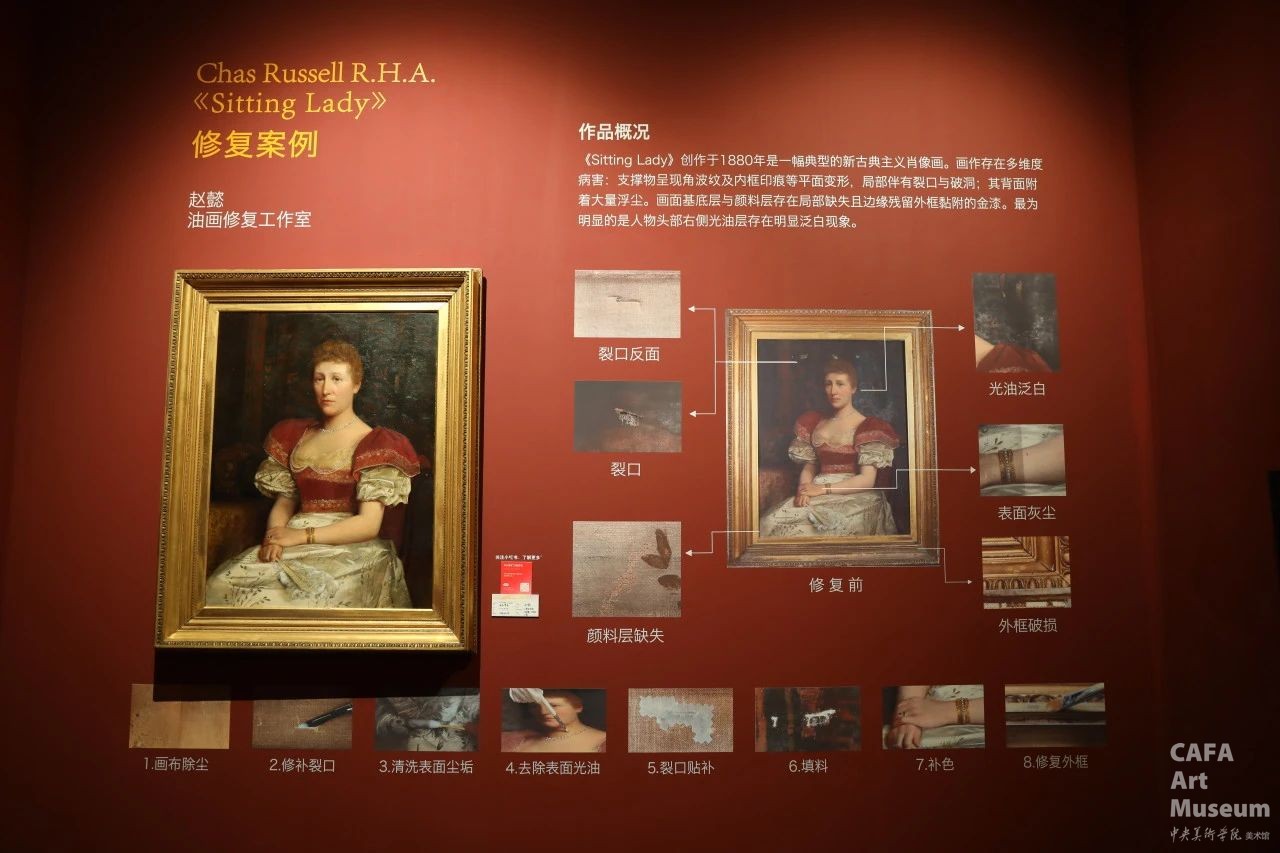
赵懿 Chas Russell 布面油画《Sitting Lady》修复案例
《Sitting Lady》创作于1880年是一幅典型的新古典主义肖像画。画作存在多维度病害:支撑物呈现角波纹及内框印痕等平面变形,局部伴有裂口与破洞,其背面附着大量浮尘。画面基底层与颜料层存在局部缺失且边缘残留外框黏附的金漆。最为明显的是人物头部右侧光油层存在明显泛白现象。
修复过程
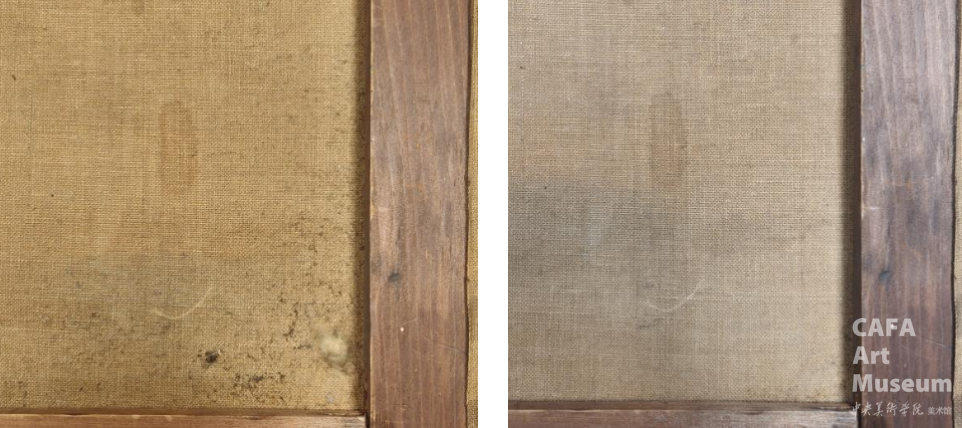
画布背面除菌吸尘(对比)

裂口/破洞处临时贴面+压重平整裂口/破洞处支撑物
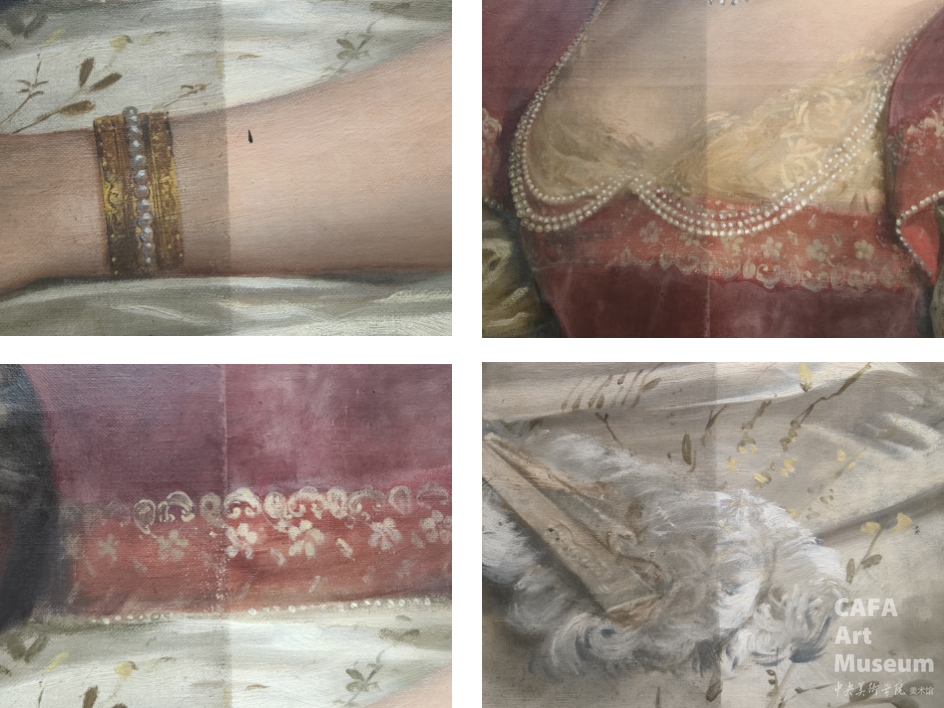
使用Ph6.5的水性清洗试剂清理表面尘垢

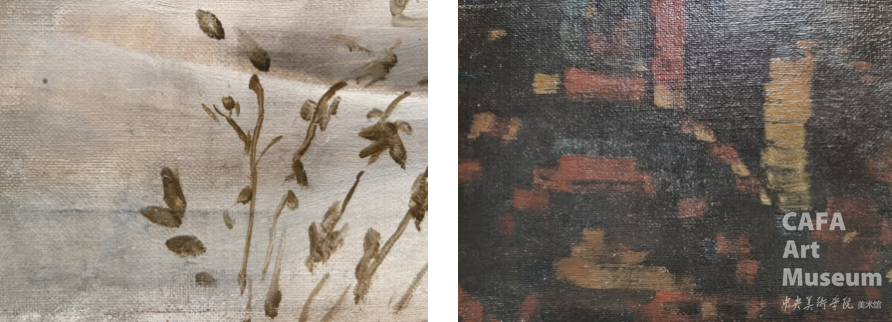
使用Ph6.5的水性清洗试剂清理表面尘垢
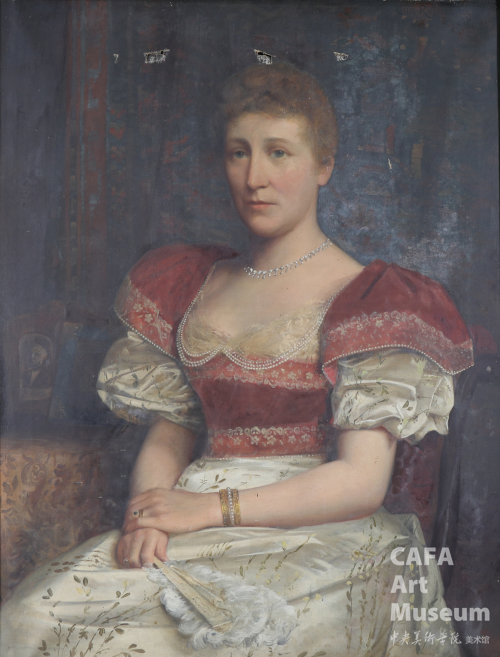
修复前
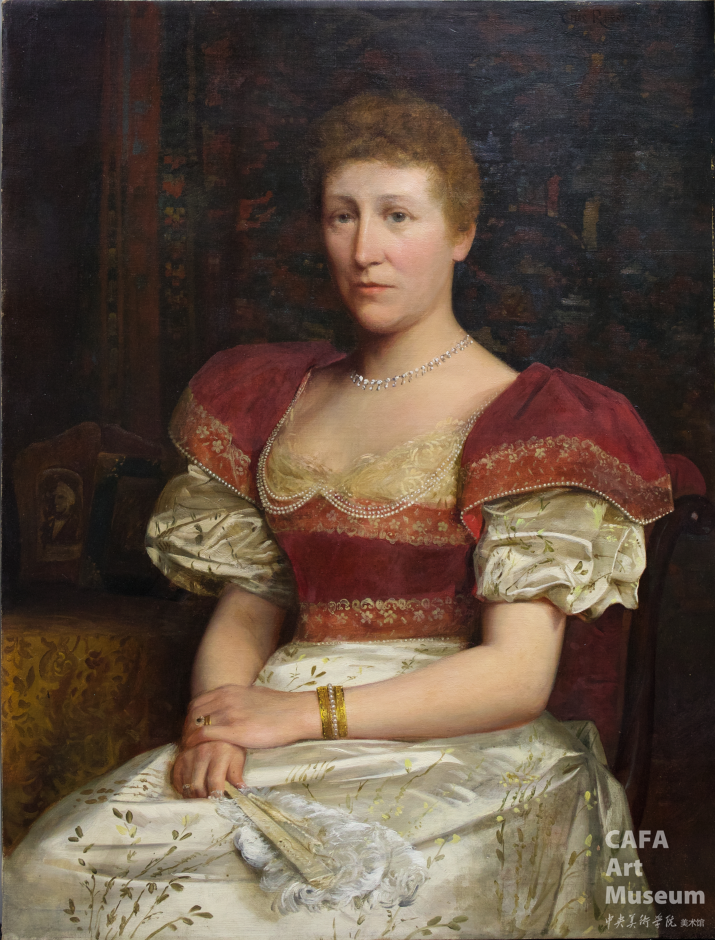
修复后
These young people are both students and pathfinders. They "hold technology in one hand and inherit ancient methods in the other"—the interdisciplinary integration of art and technology shines as a distinctive trait of this new generation of restorers. From a cross-cultural perspective, they continuously raise reflections on the ethics of contemporary cultural heritage restoration. Behind each work lies a three-dimensional interpretation of the word "restoration": it is the physical mending, but more importantly, the reconstruction of historical logic; it is the inheritance of craftsmanship, and even more, the rebirth of cultural values.
Reservation Channel
2025 CAFA Graduation Season
CAFAM@ 2025
The online reservation and ticketing channel for the 2025 CAFA Graduation Season is now open. Visitors can make reservations and purchase tickets through the mini-program of the CAFAM, WeChat official account, or the official website . The daily number of visiting spots is limited and will be closed once fully booked. During the graduation season, the museum is normally open on Mondays.
When making a reservation, valid identification documents must be used for real-name registration. Each person can only make one reservation per day. After a successful reservation, visitors should arrive at the scheduled time. During the graduation season, please enter the museum through the dedicated ticket channel at the north gate of CAFA by swiping valid documents such as an ID card for verification.
Chief Editor / He Yisha
Editor / Du Yinzhu
Part of the text and images are sourced from the Restoration College of CAFA
